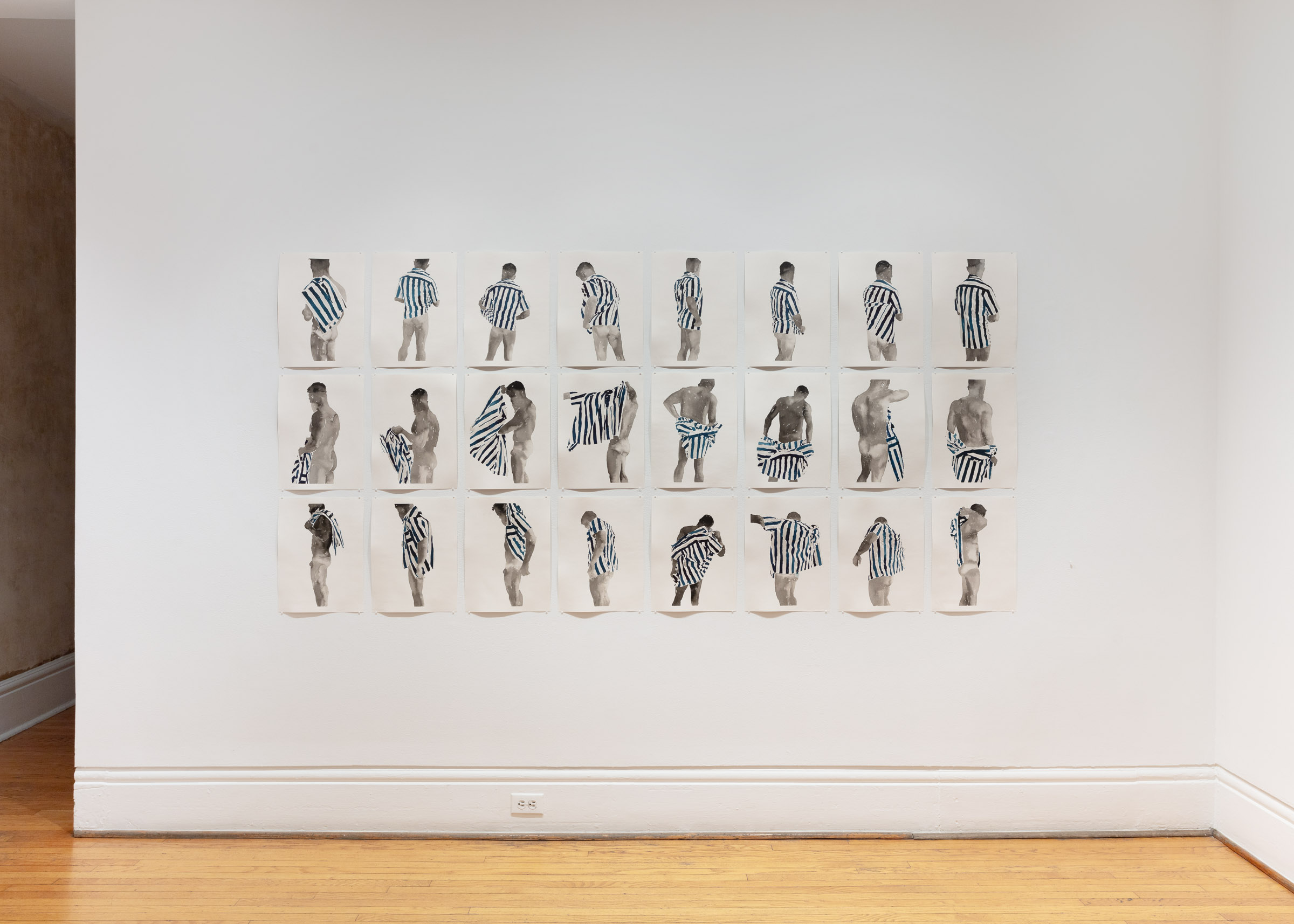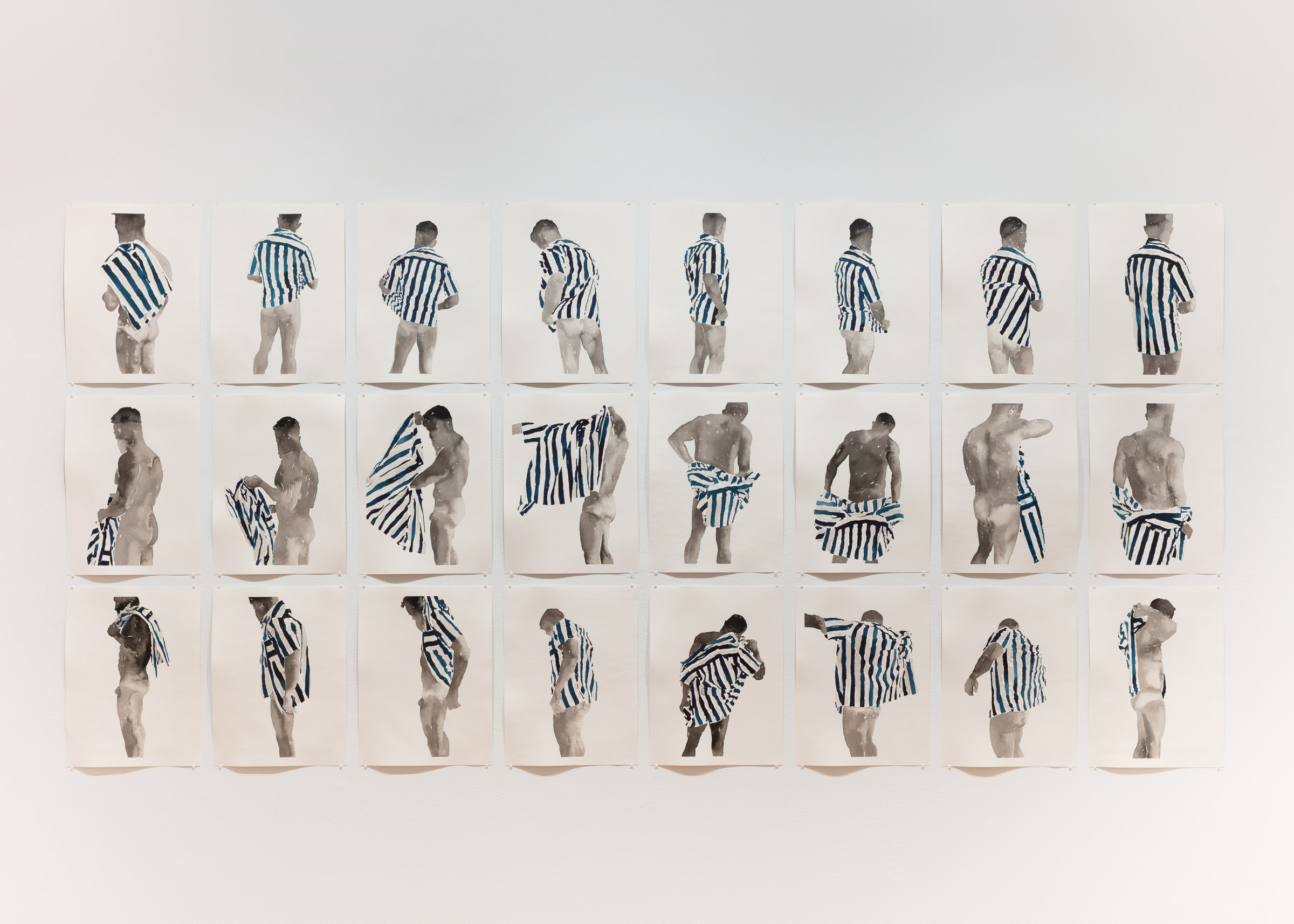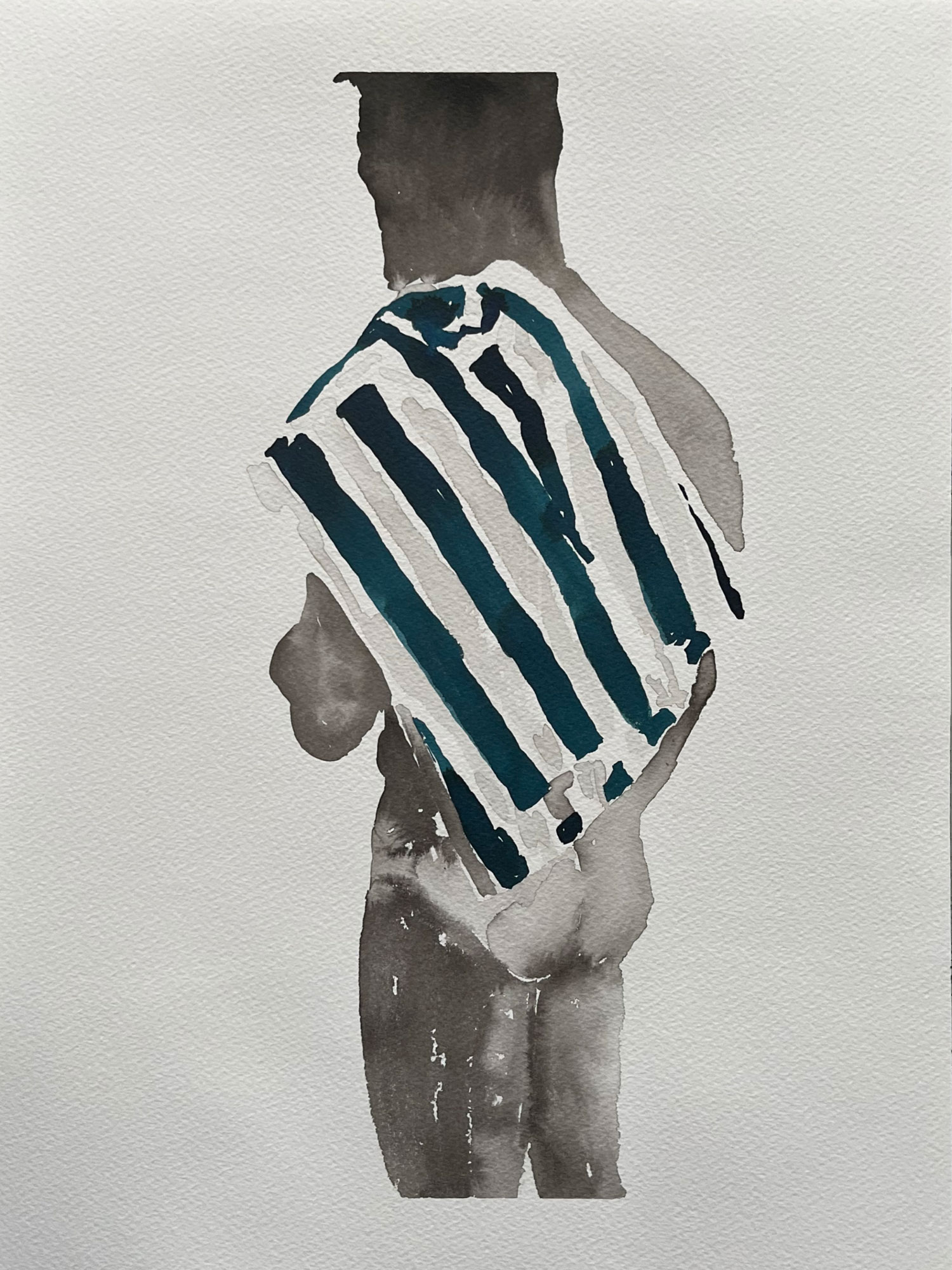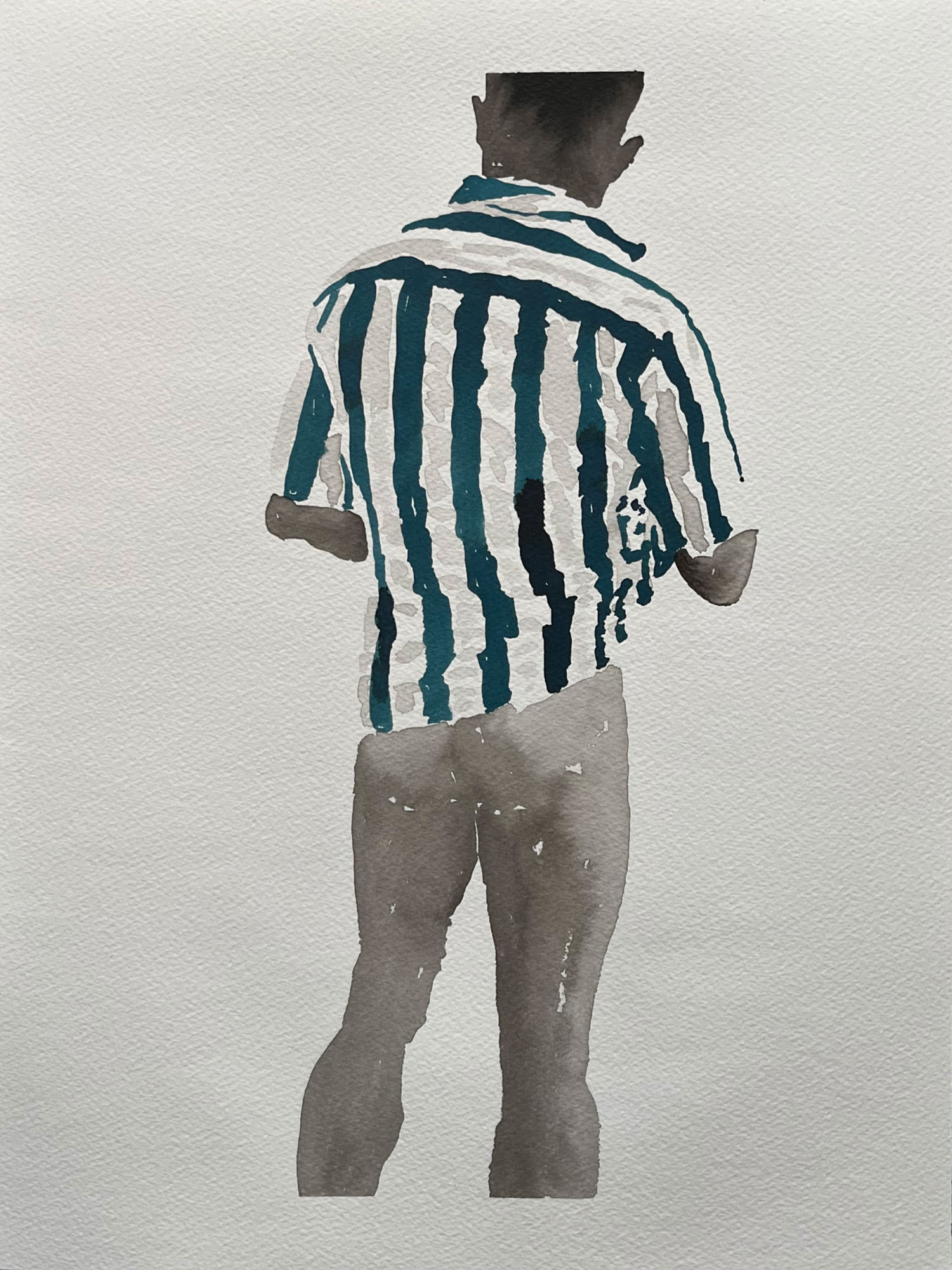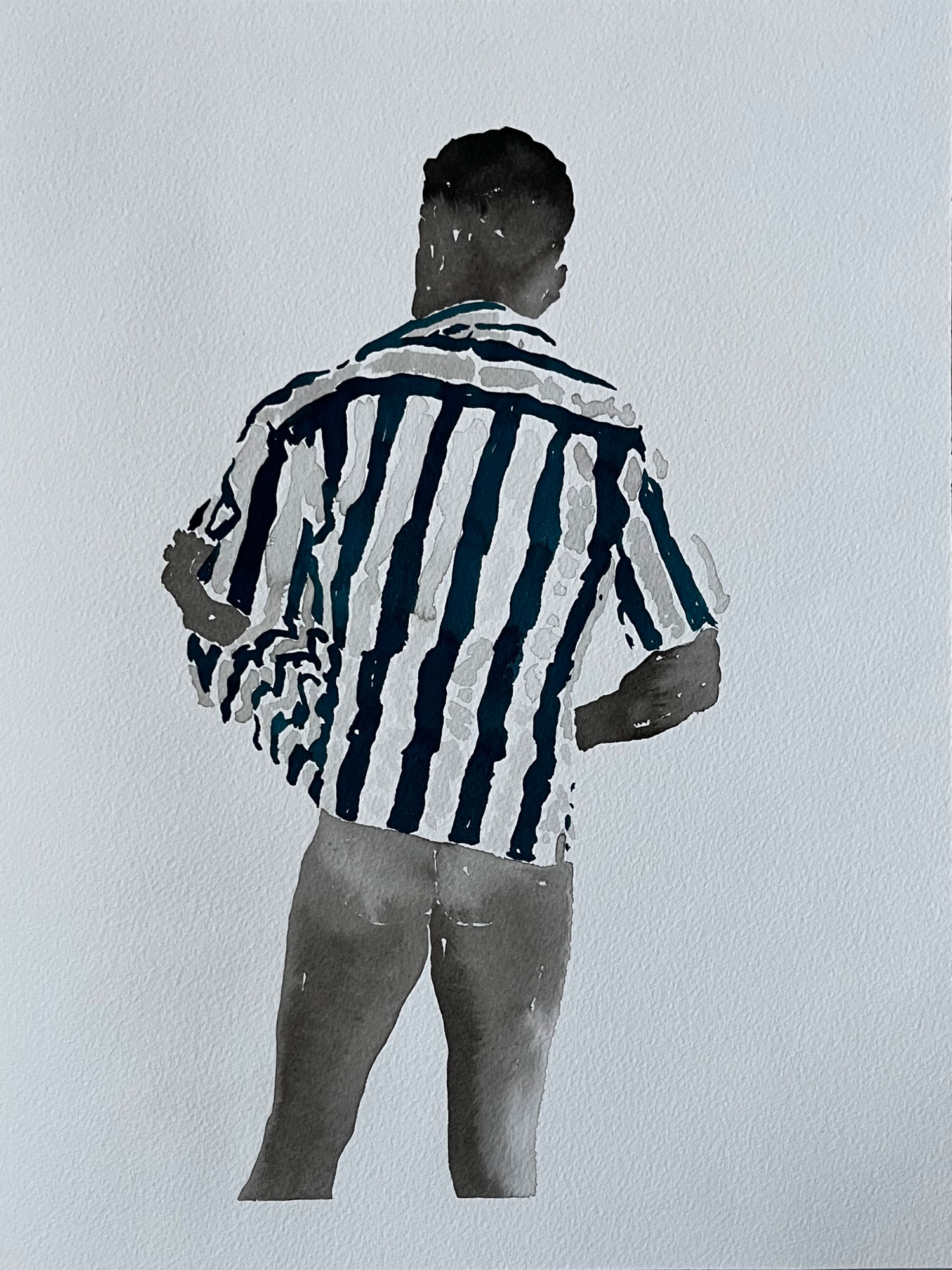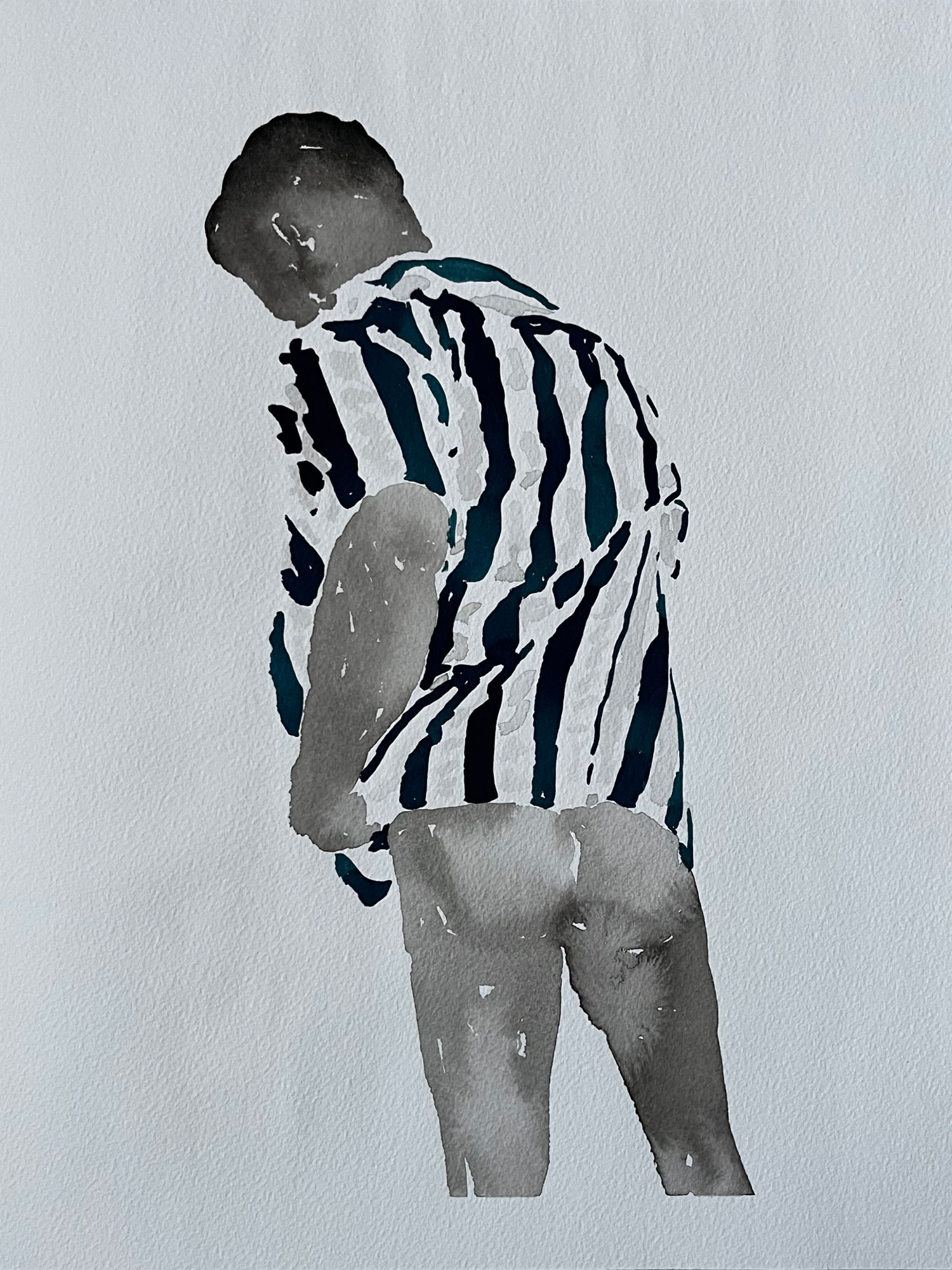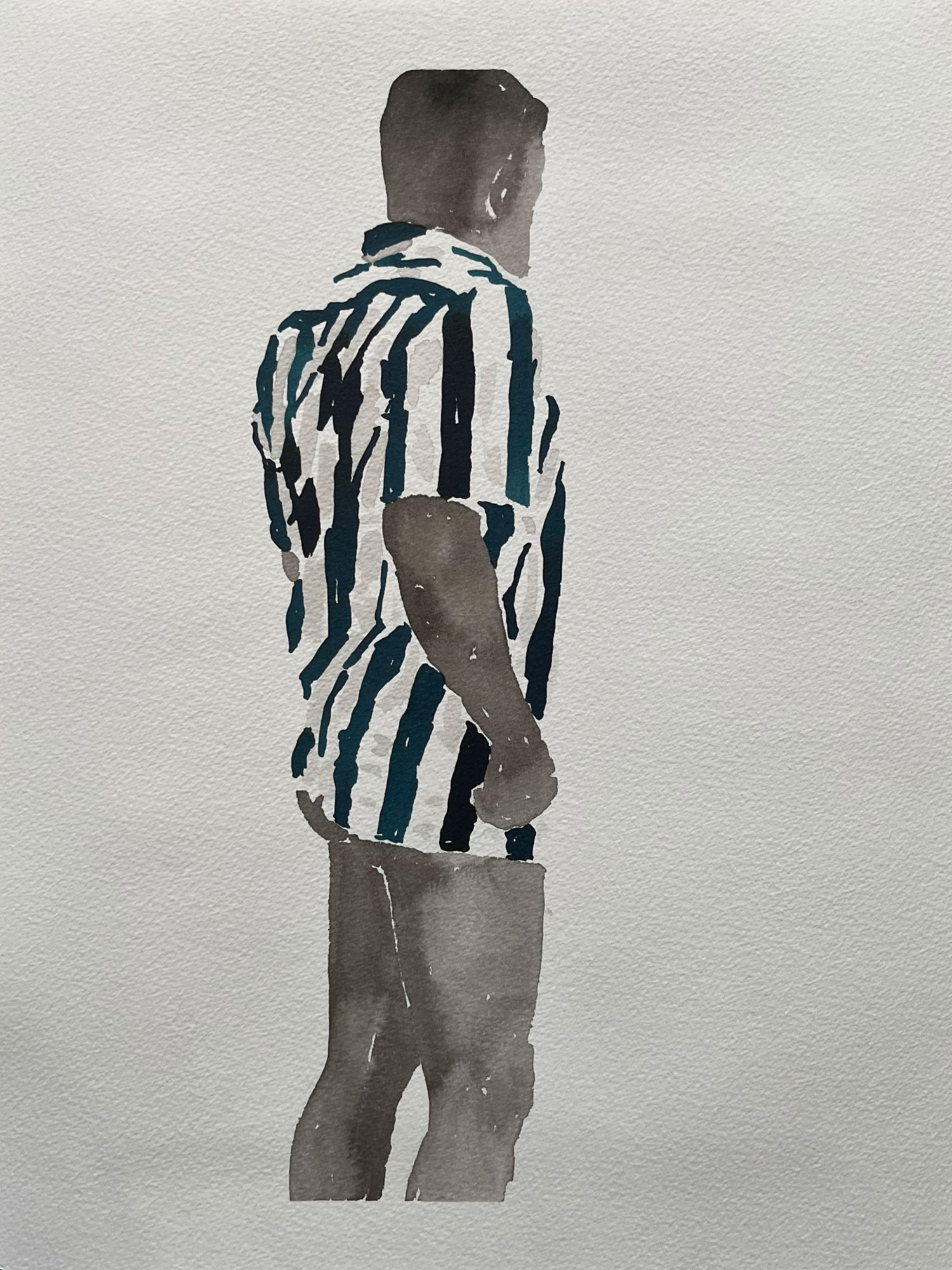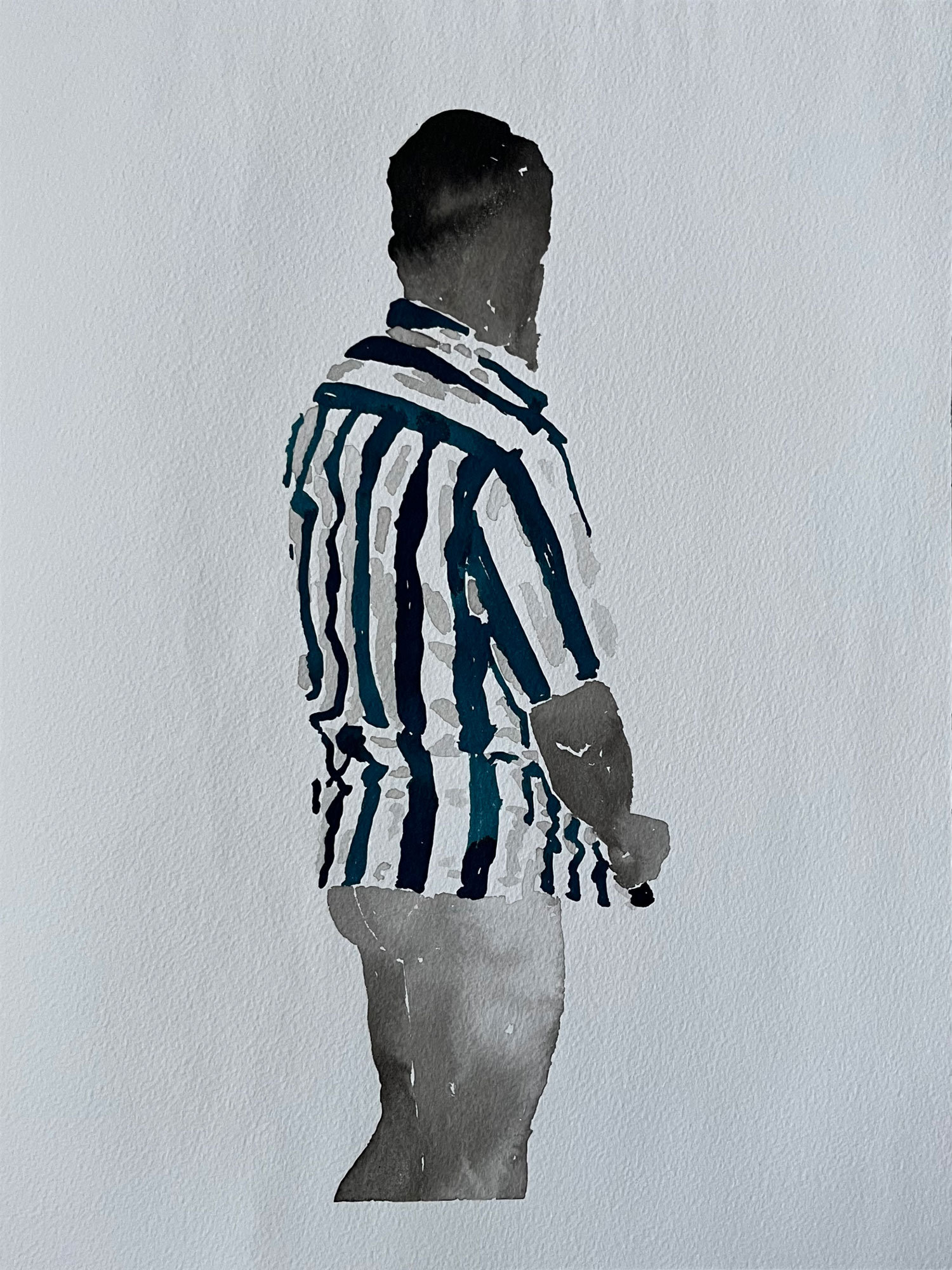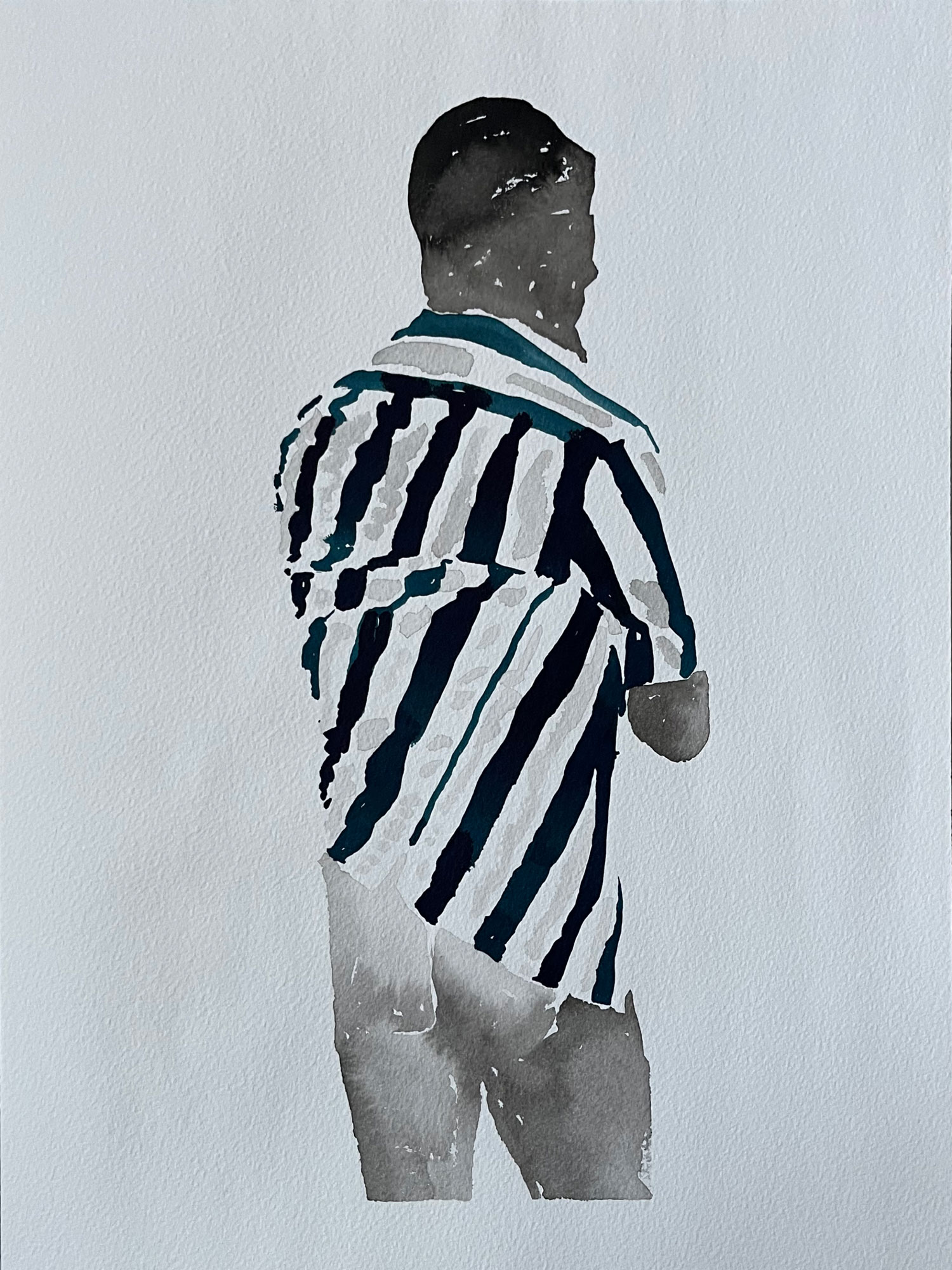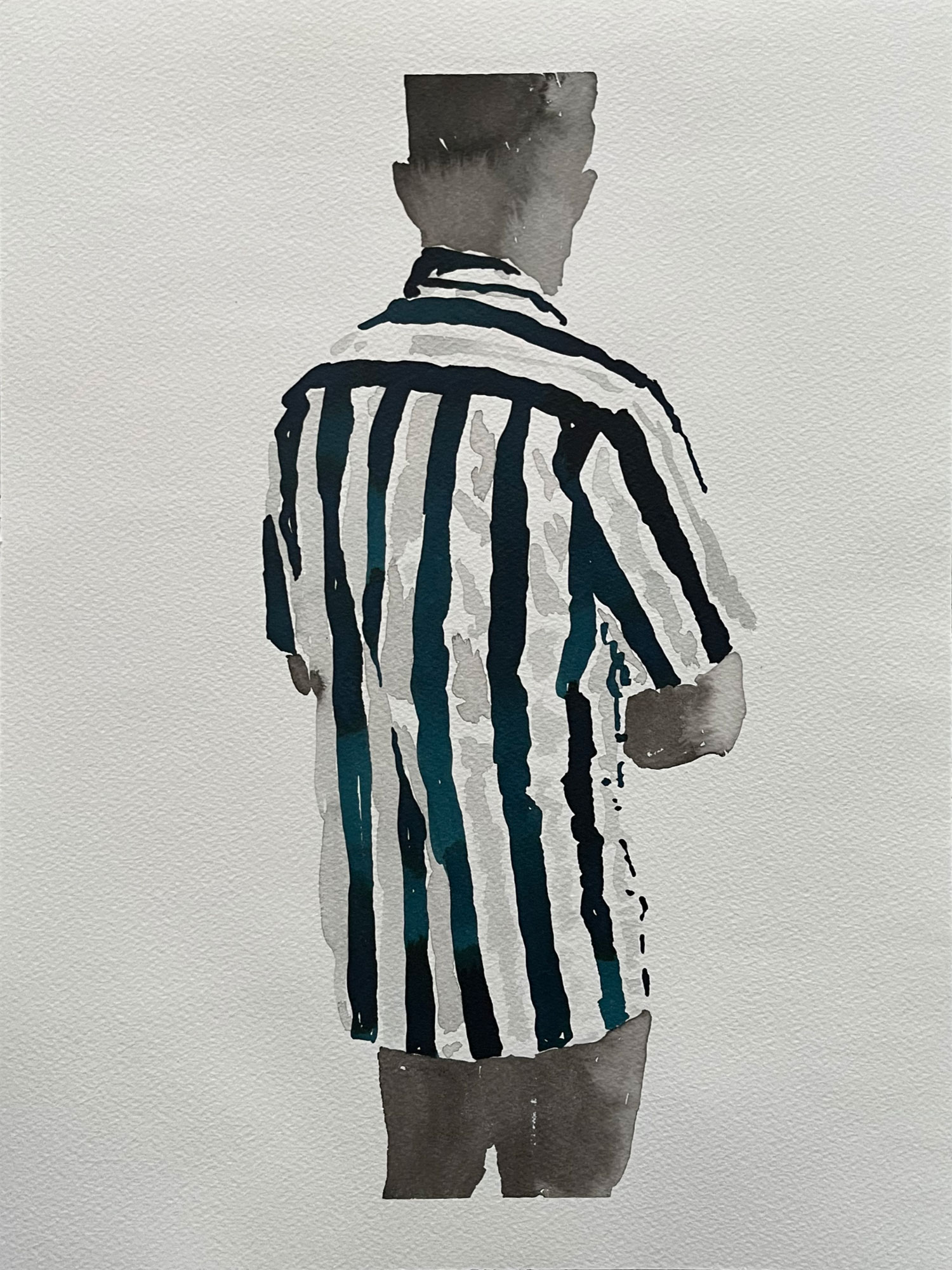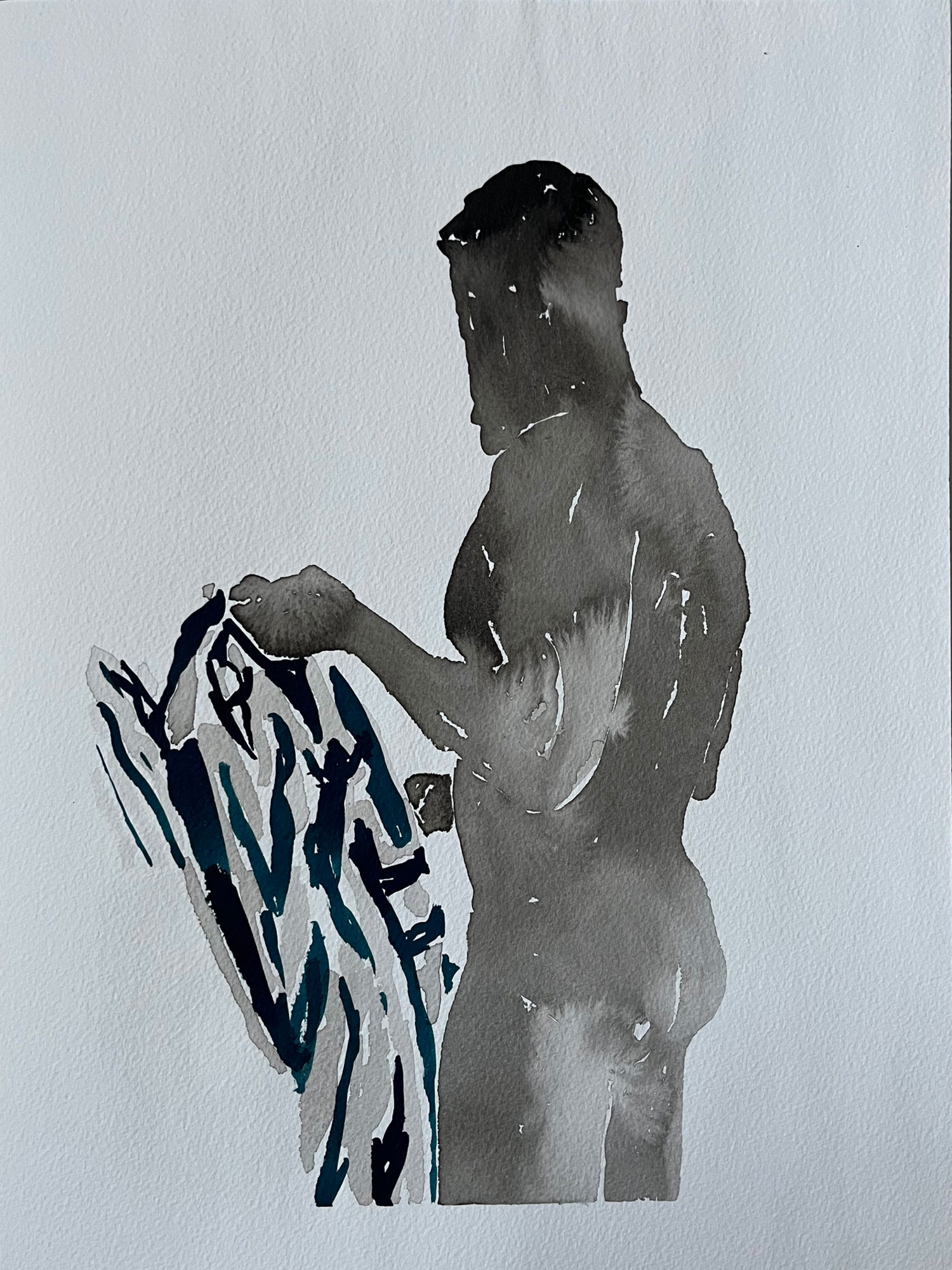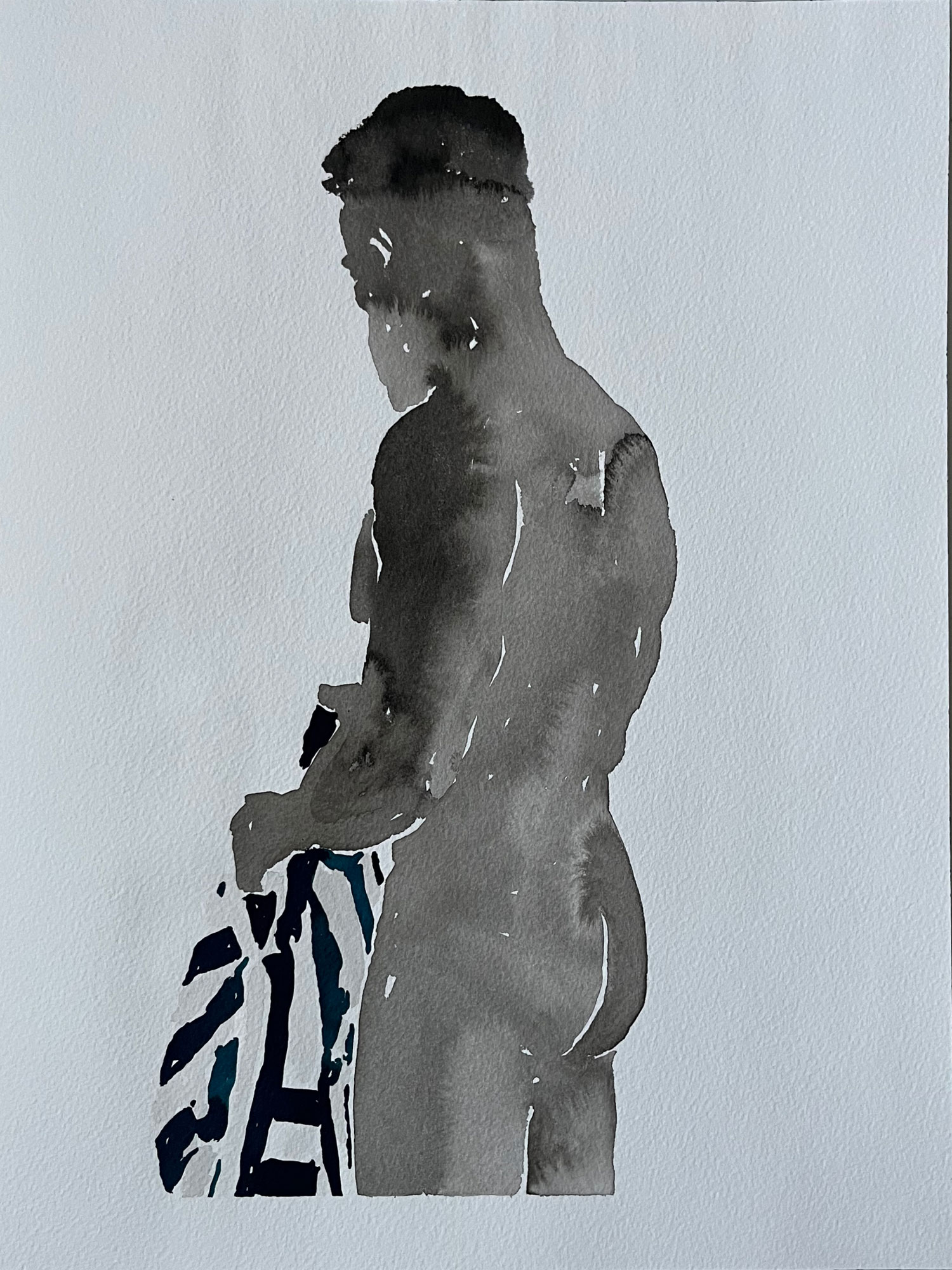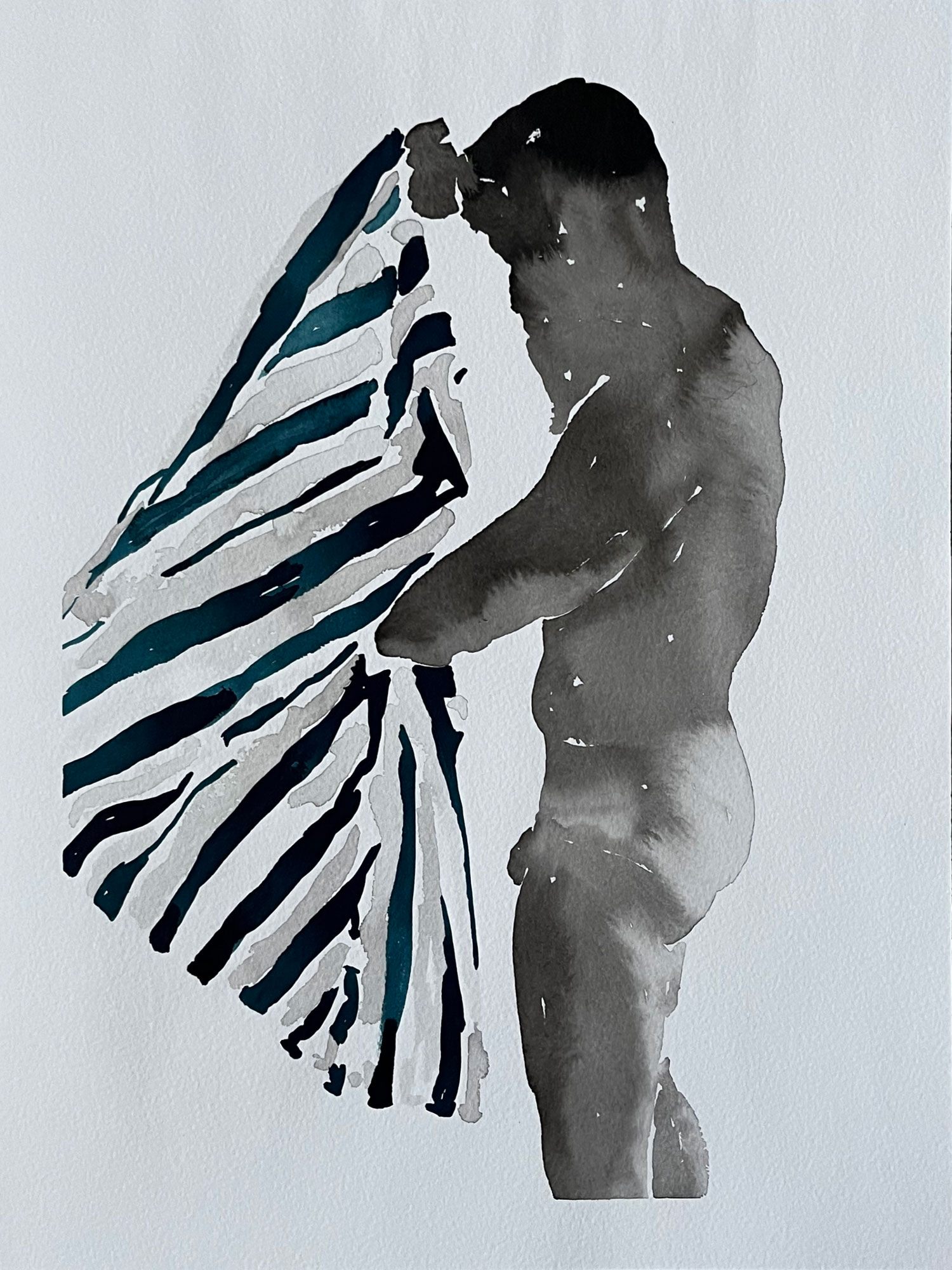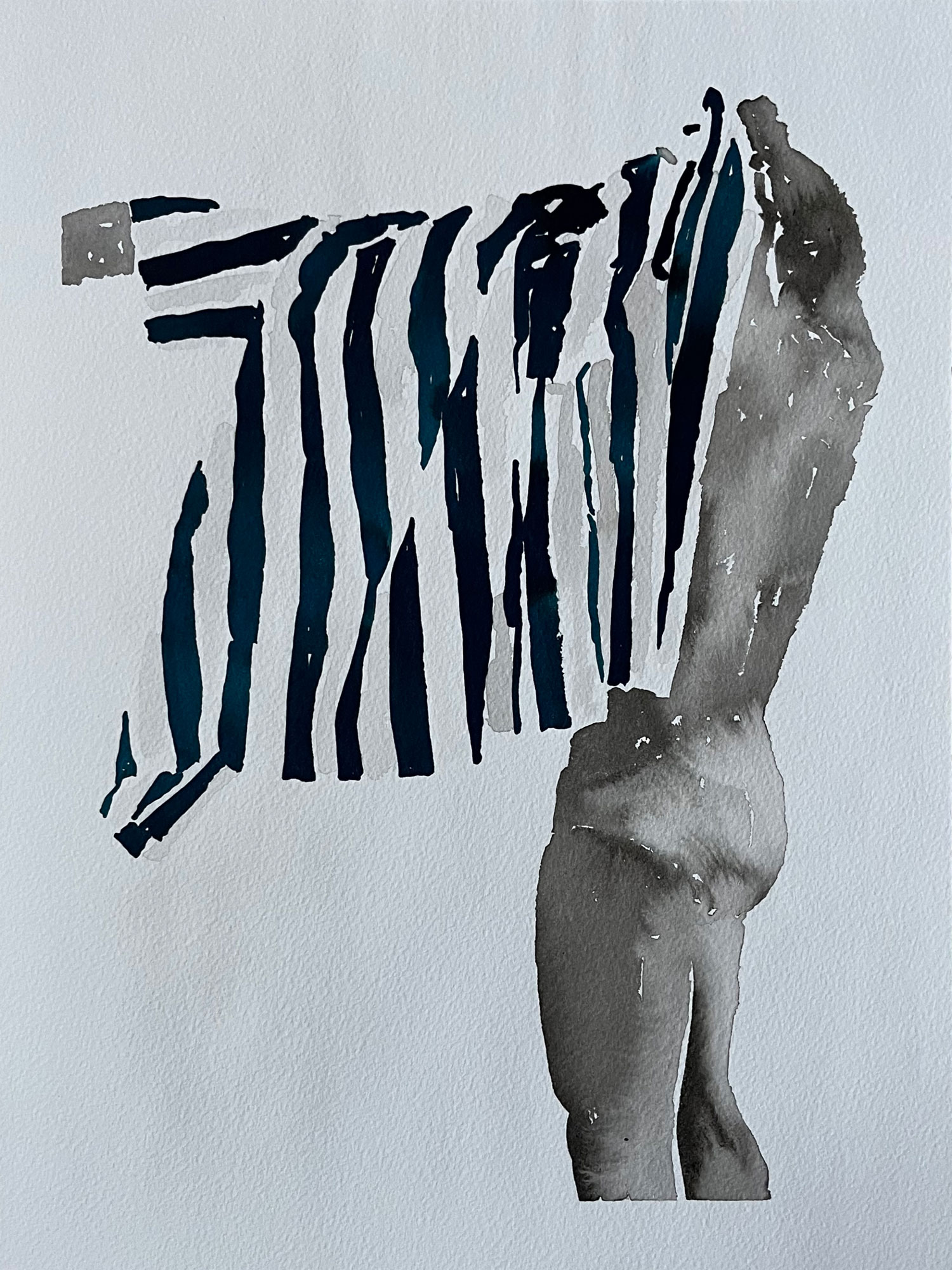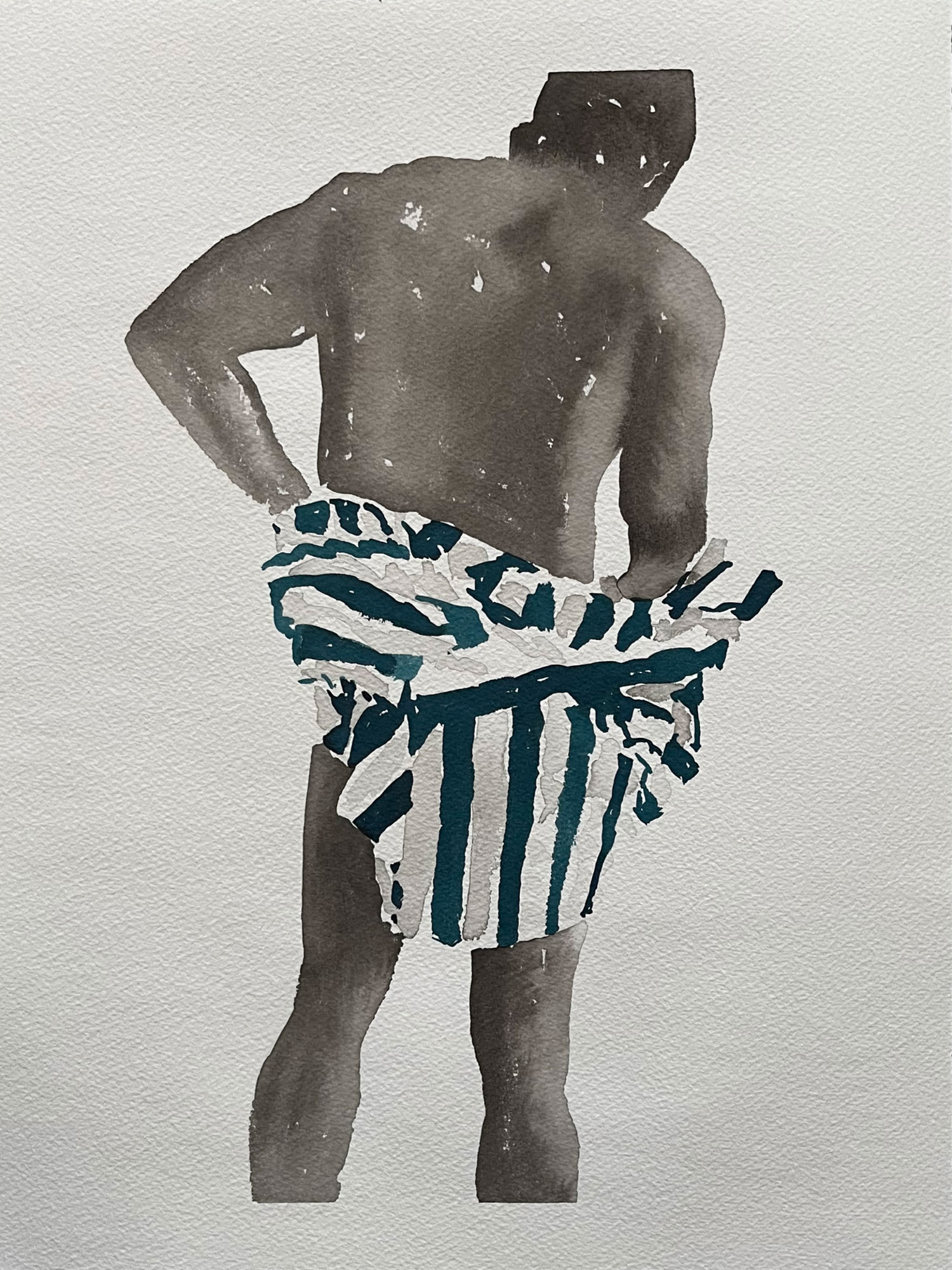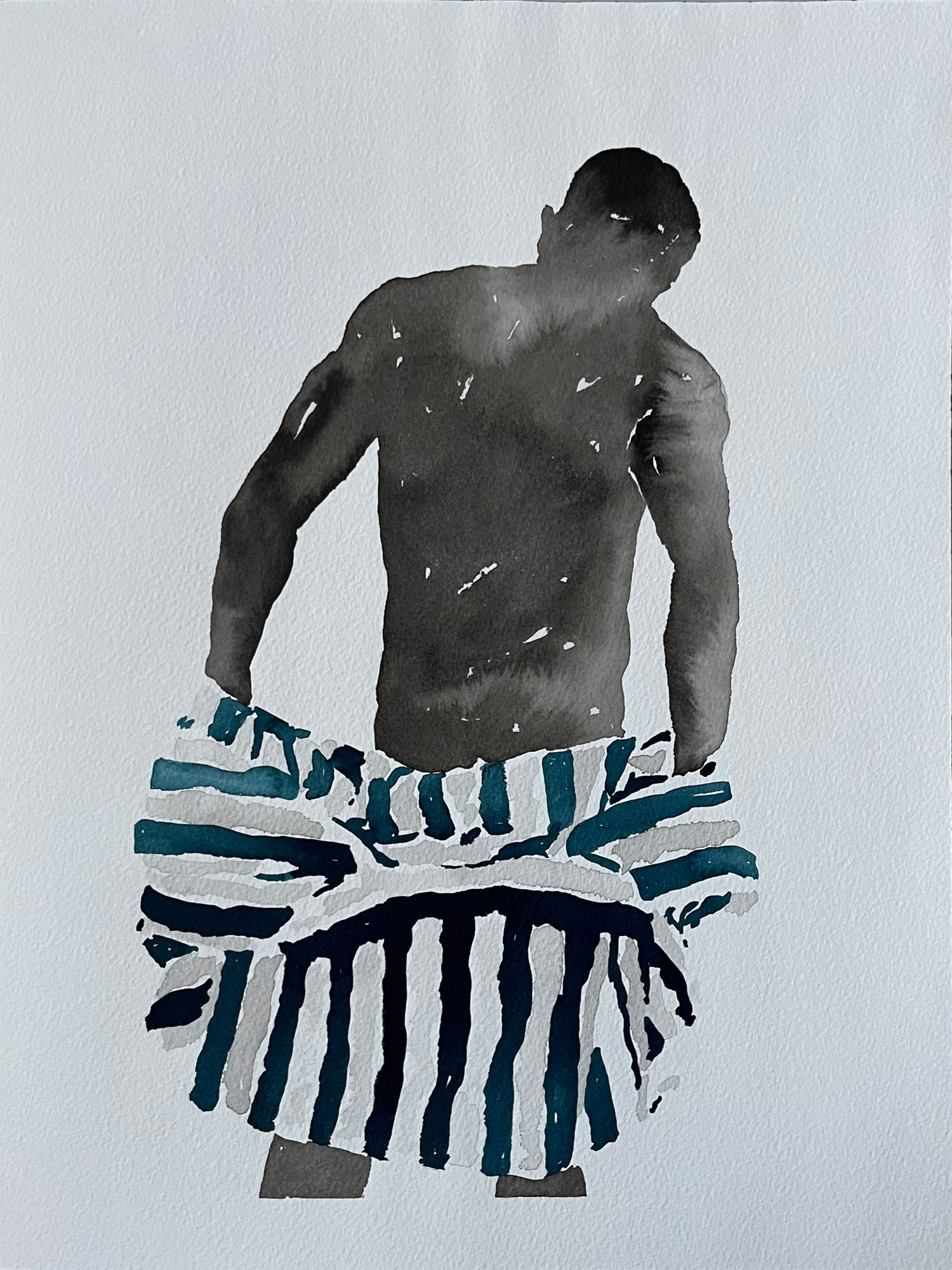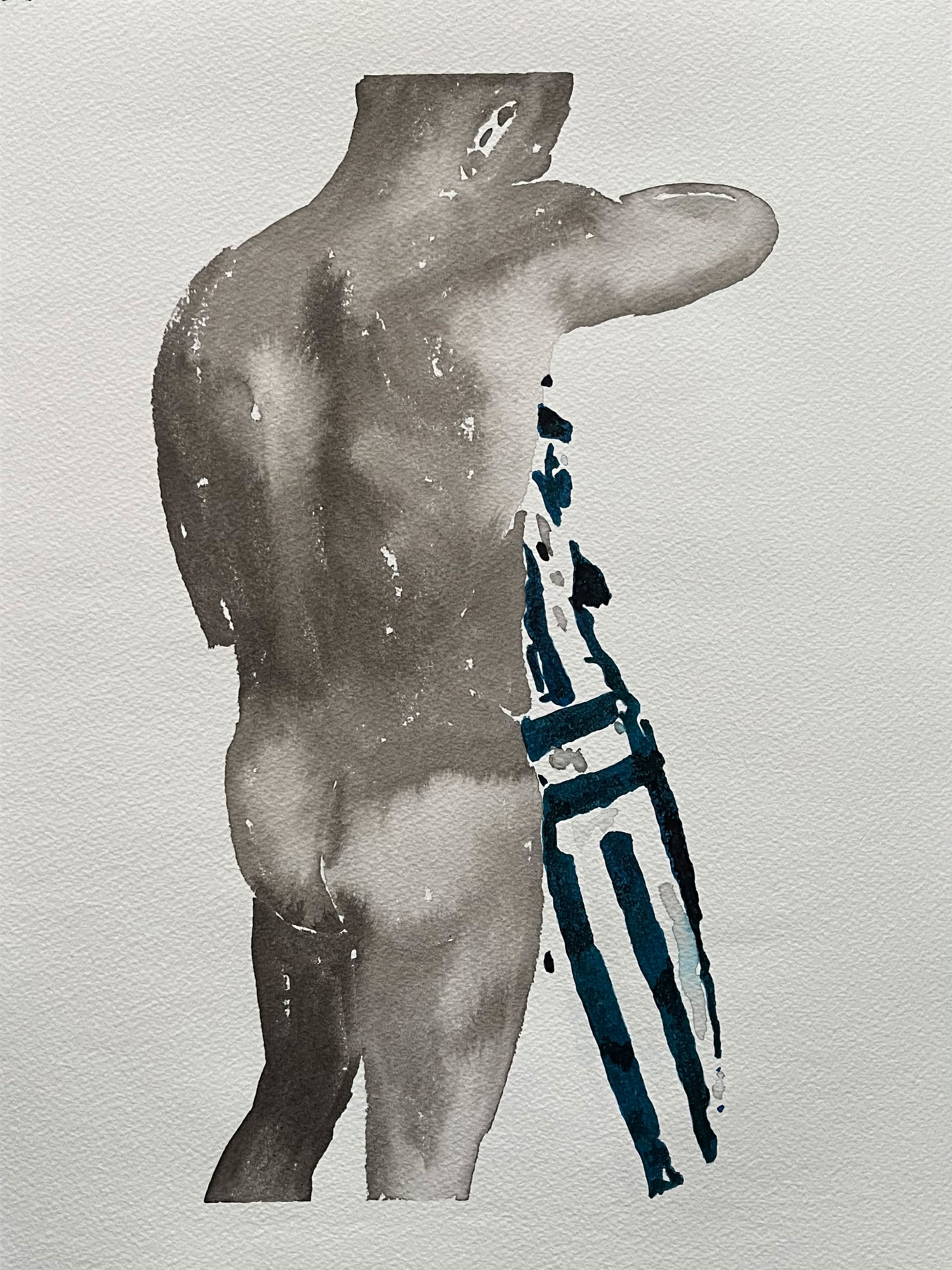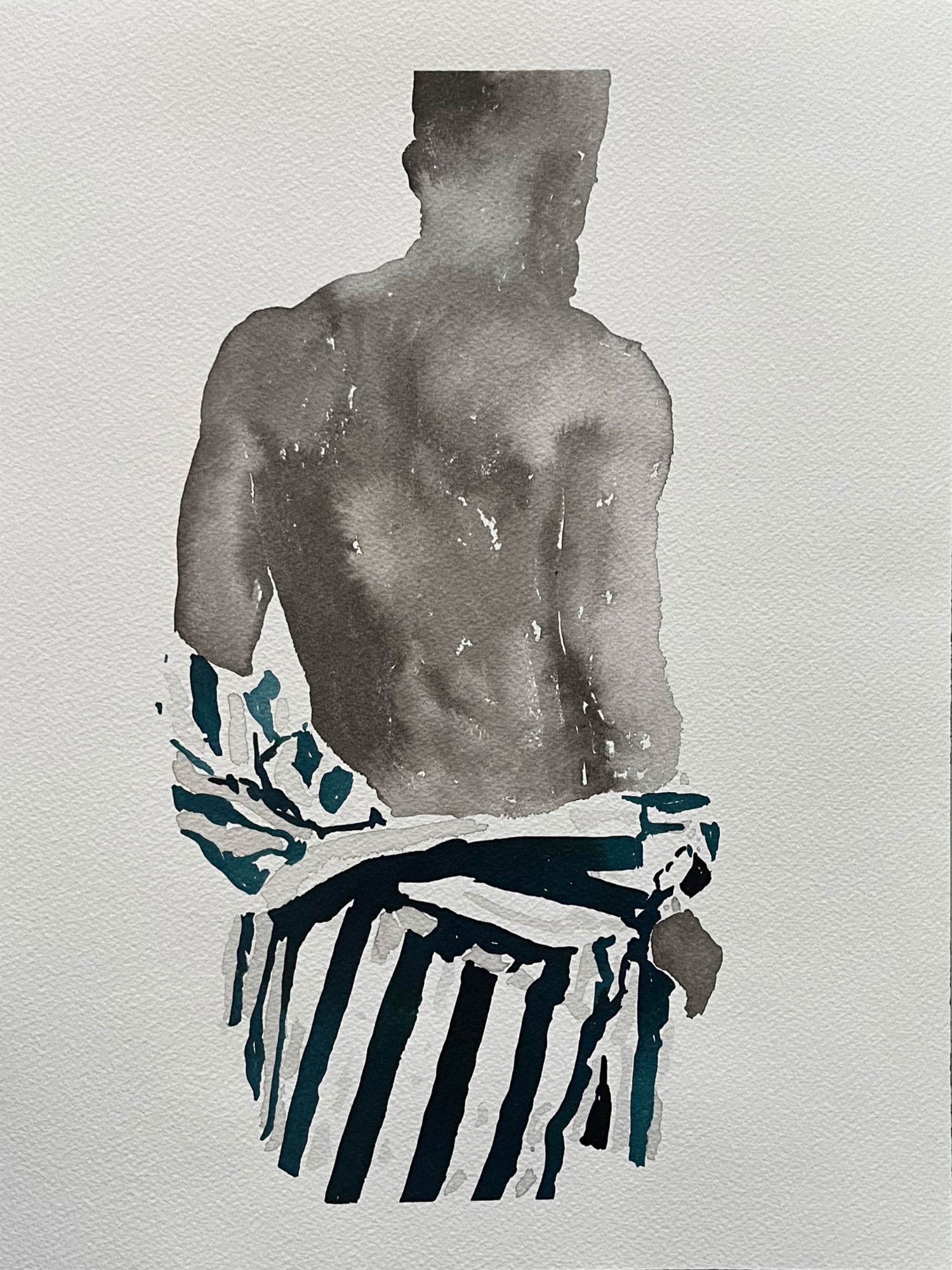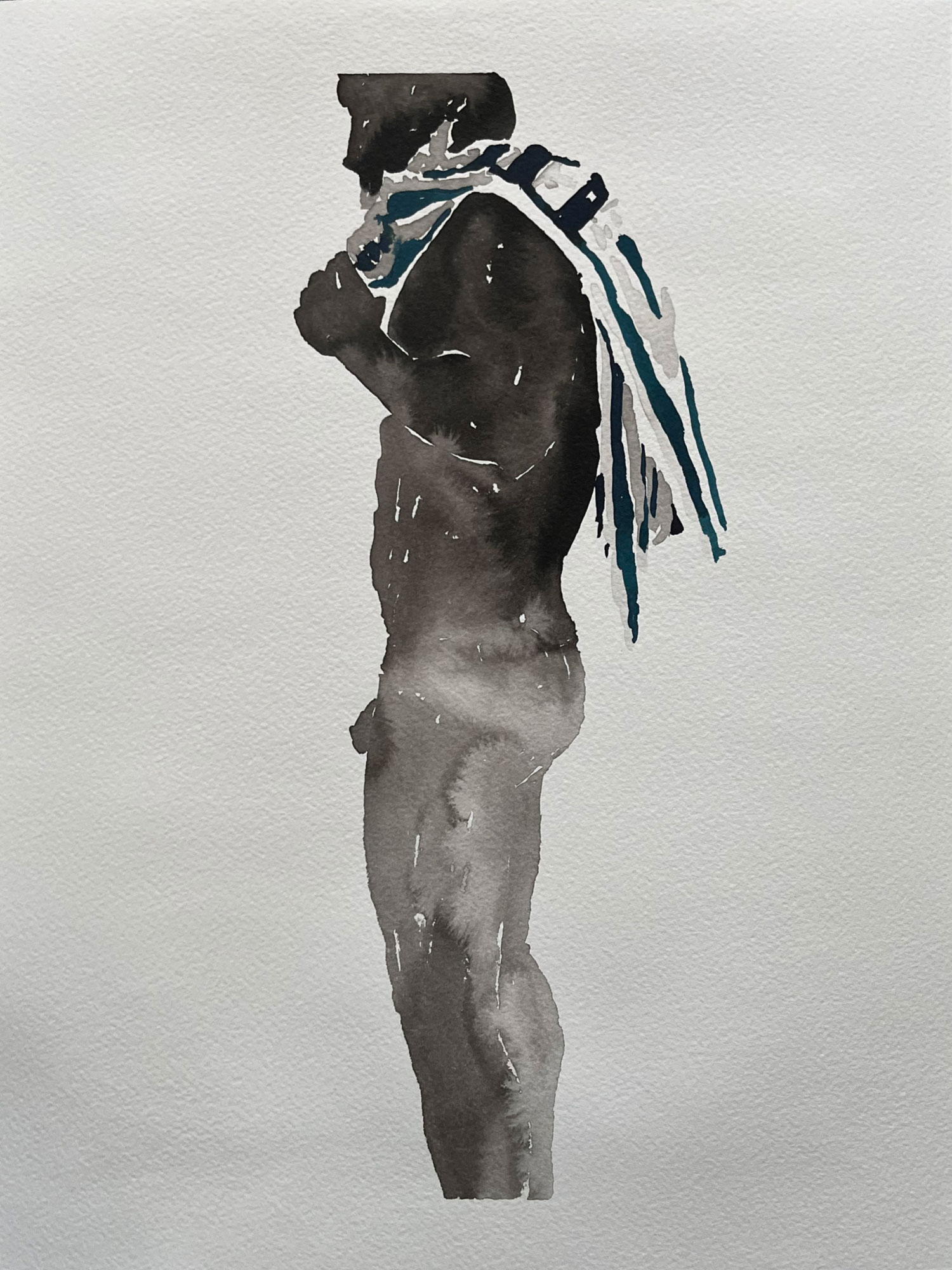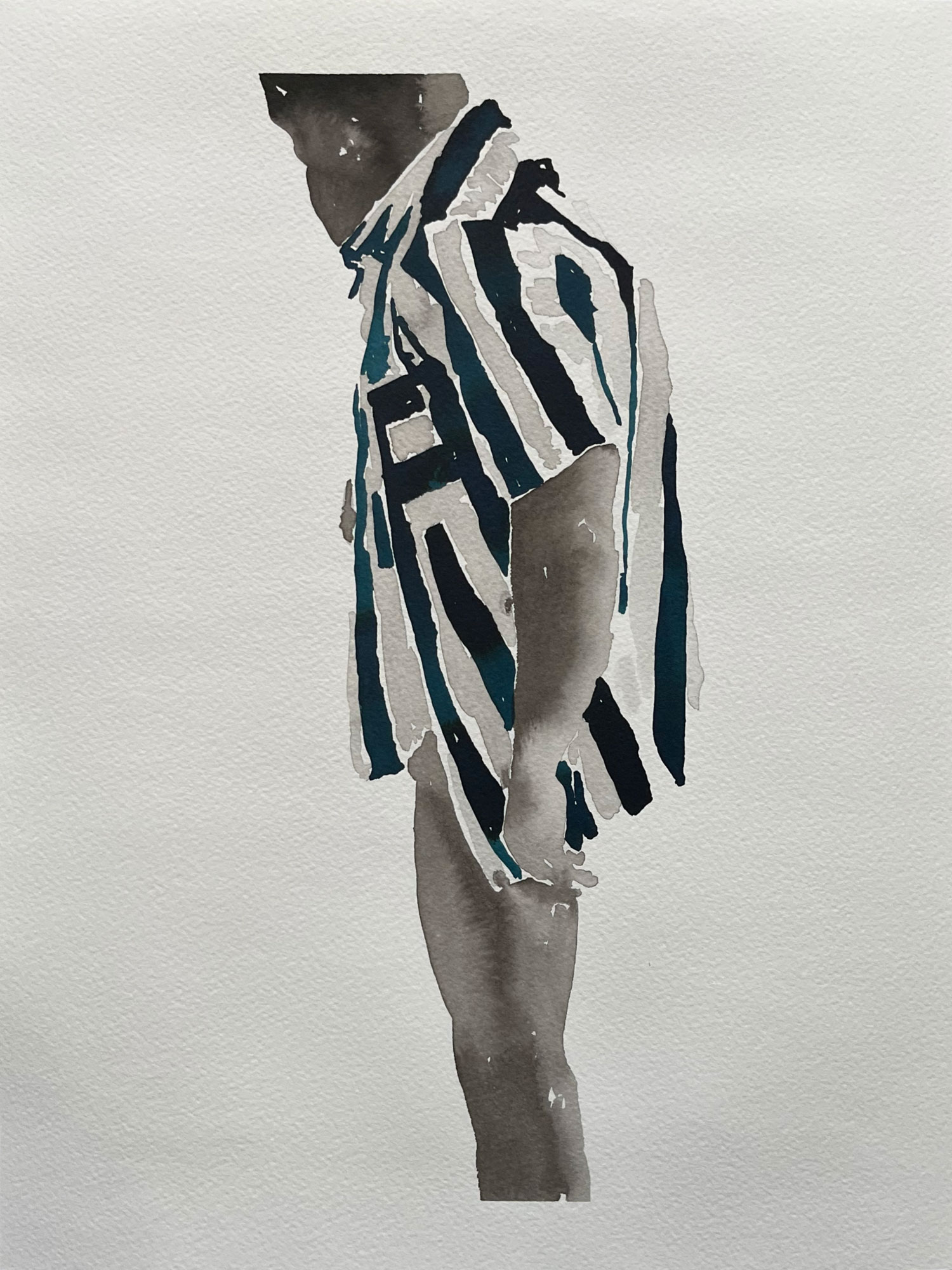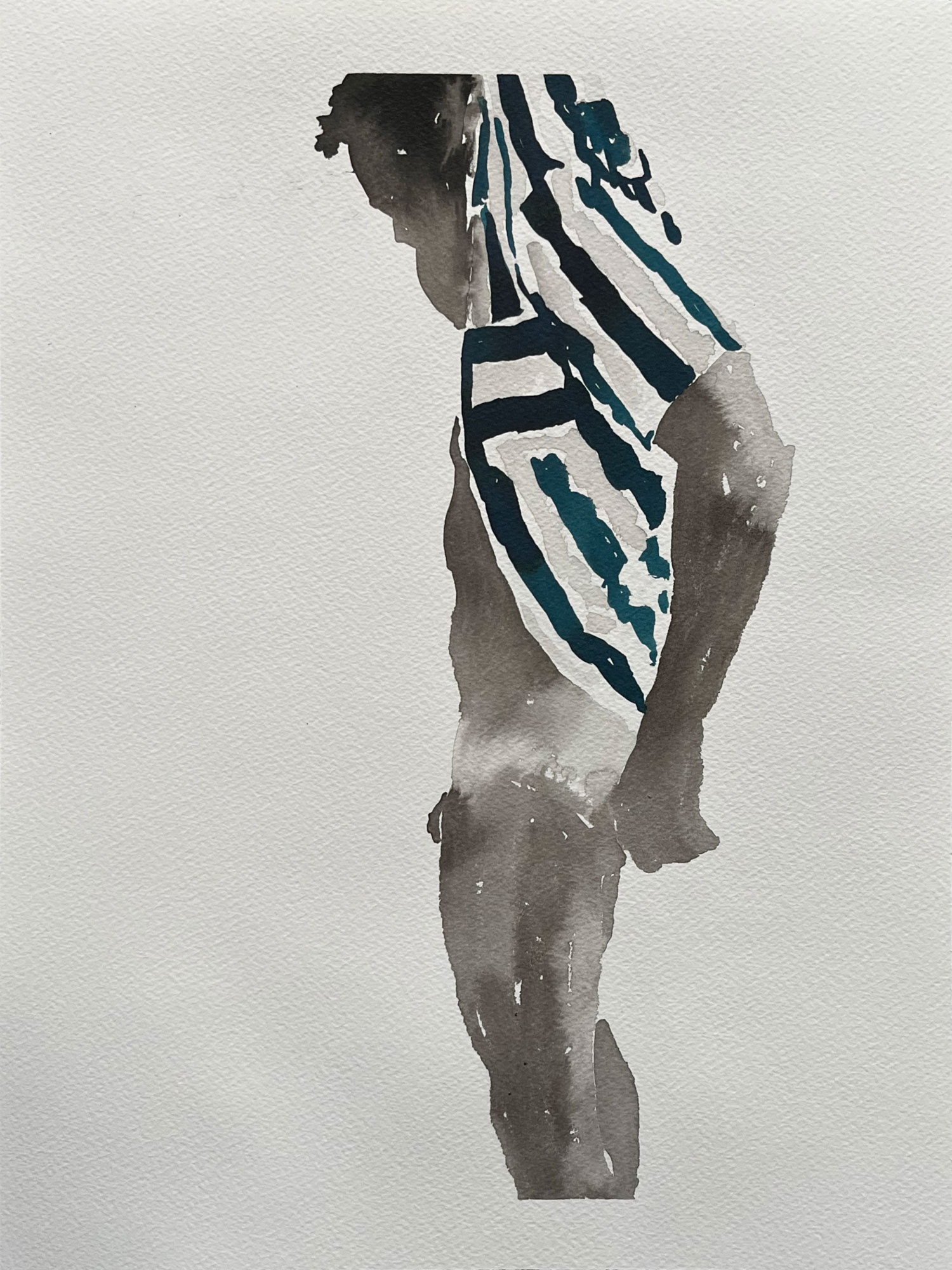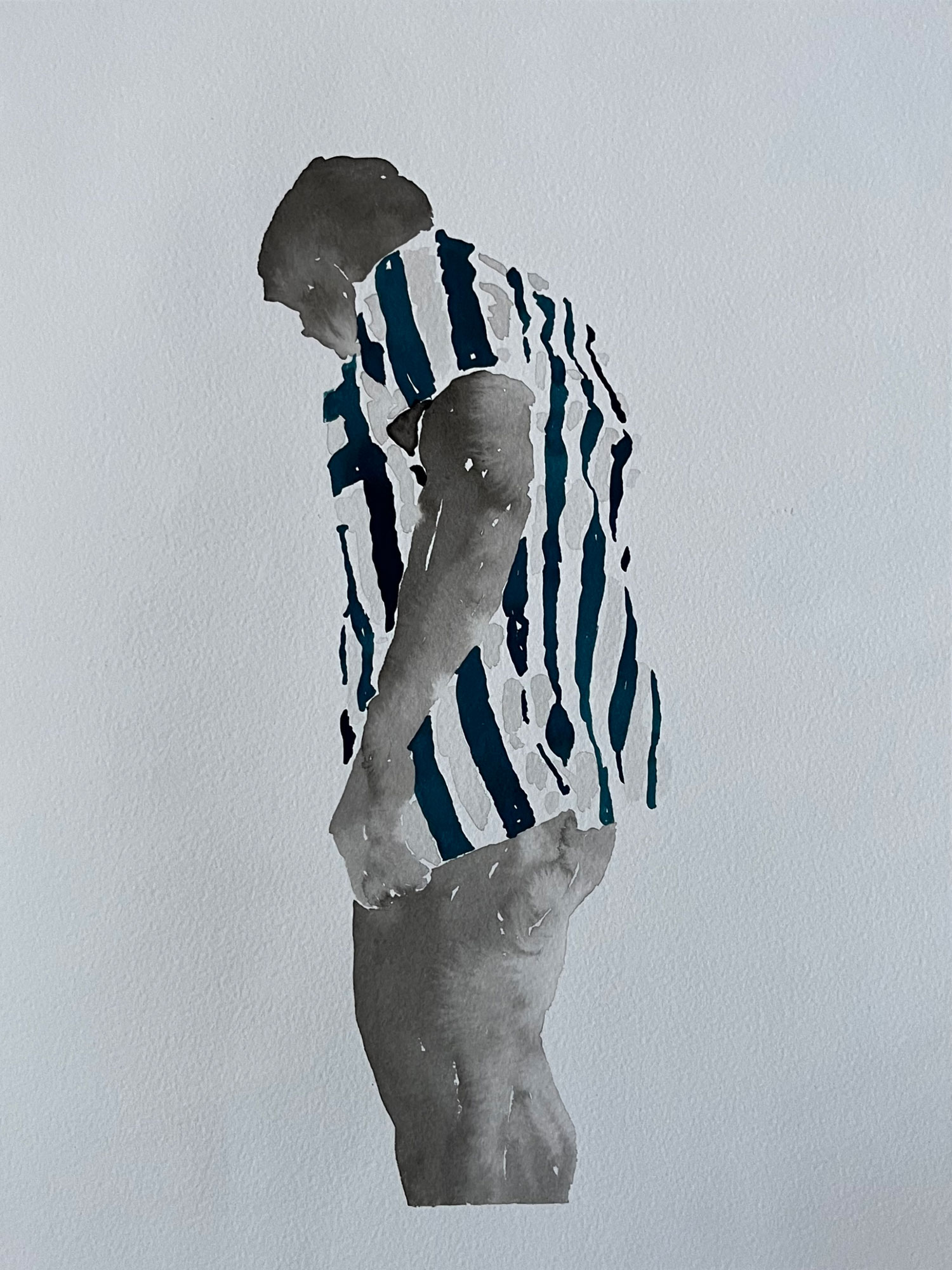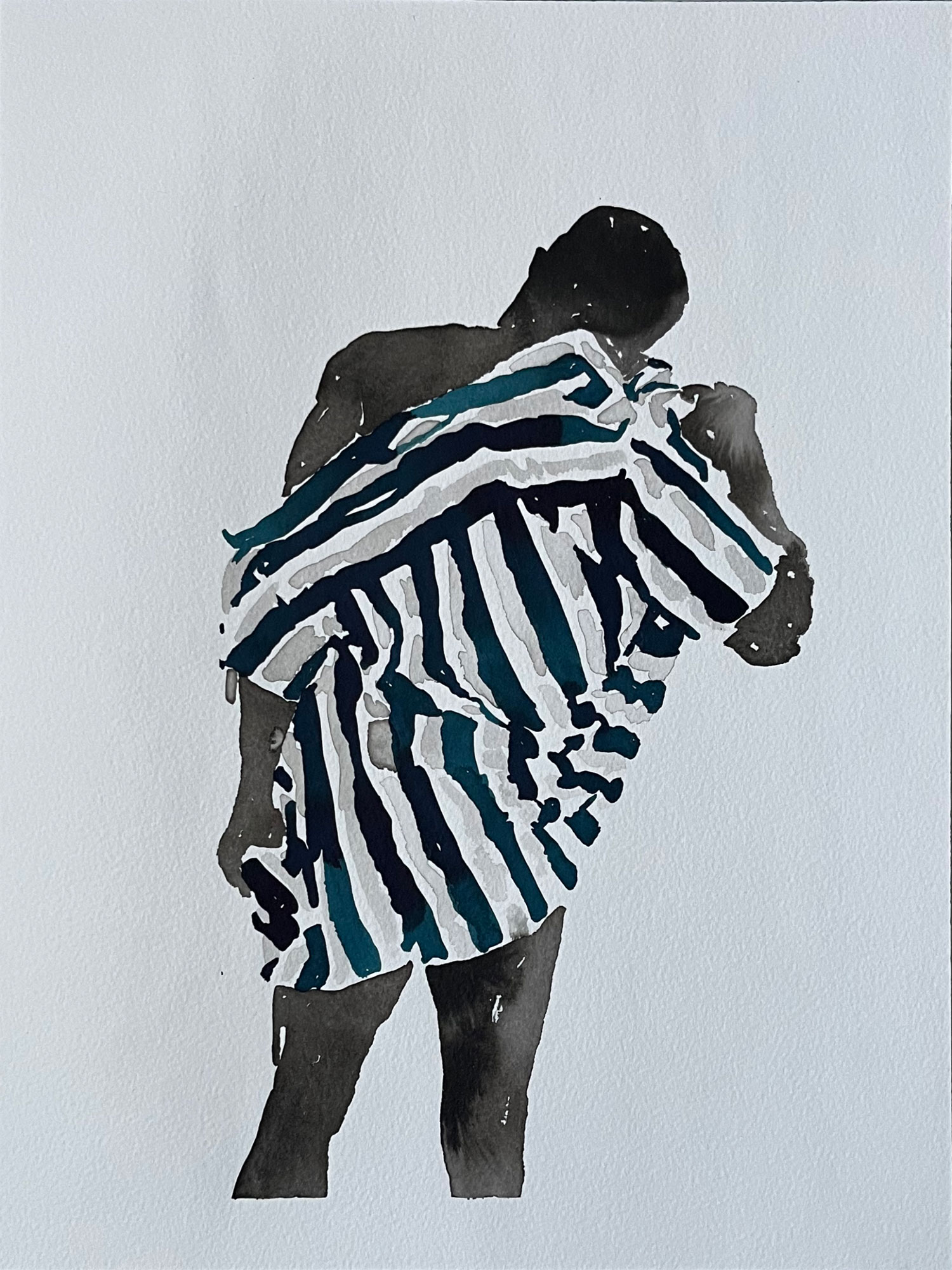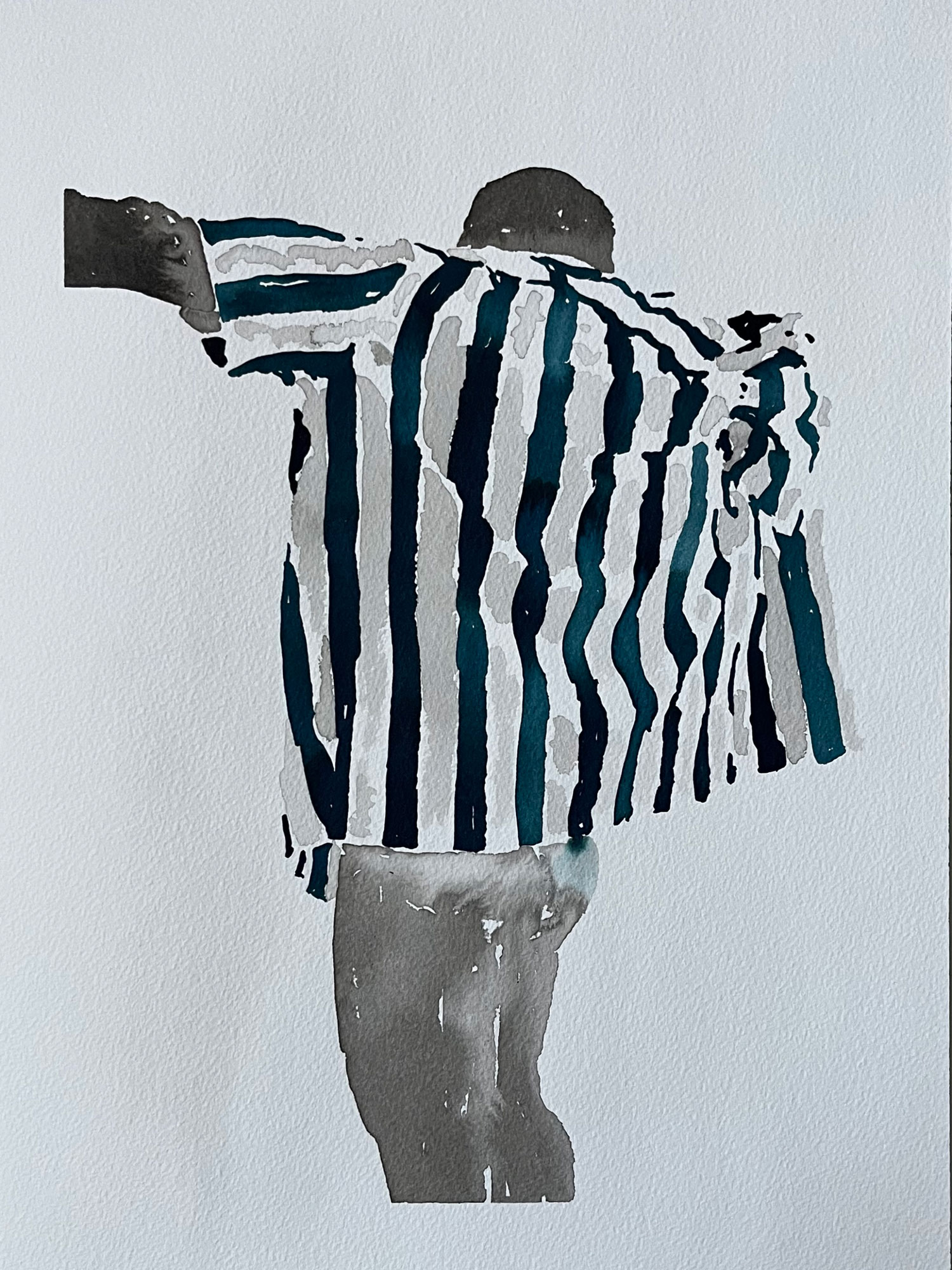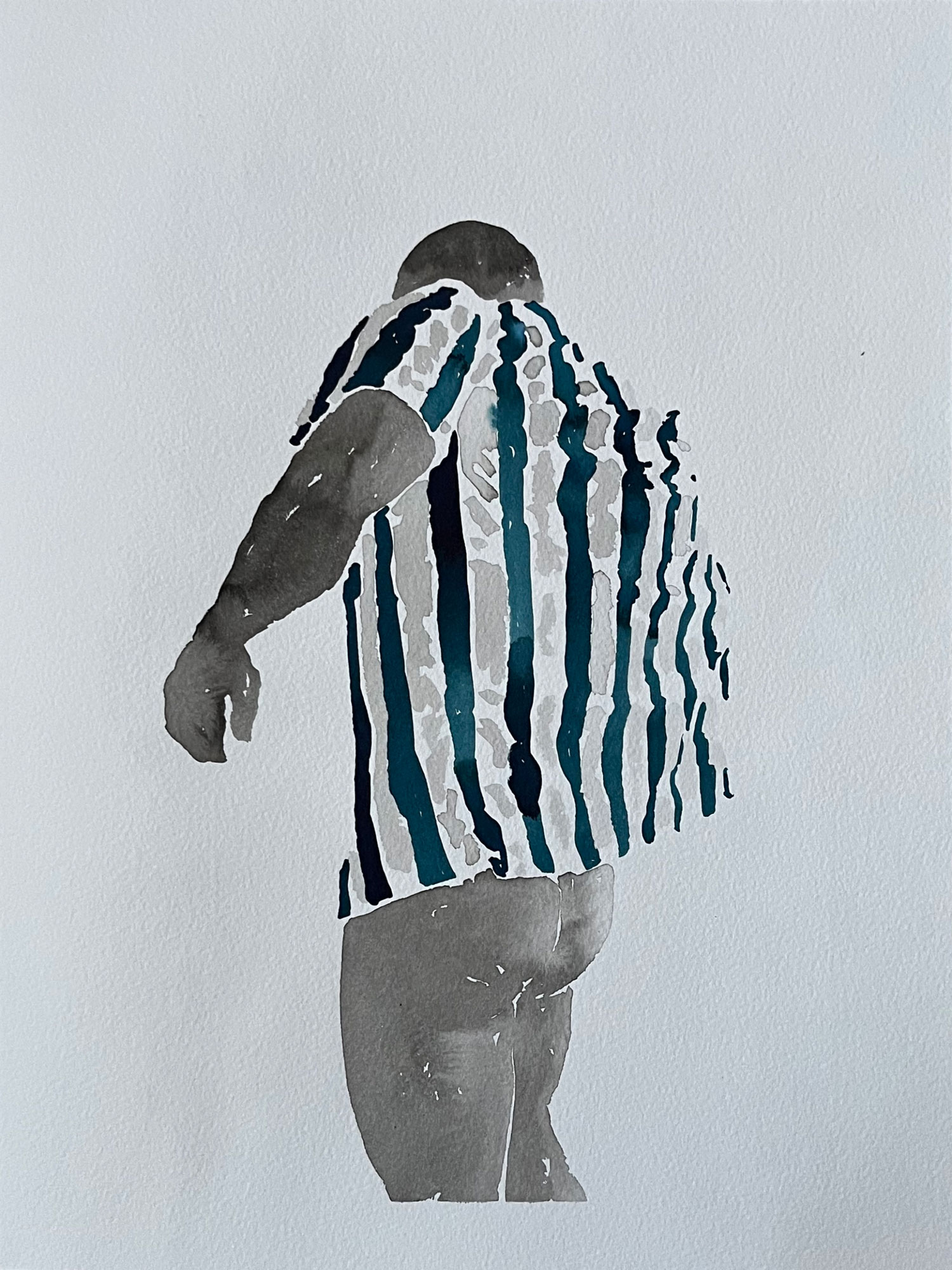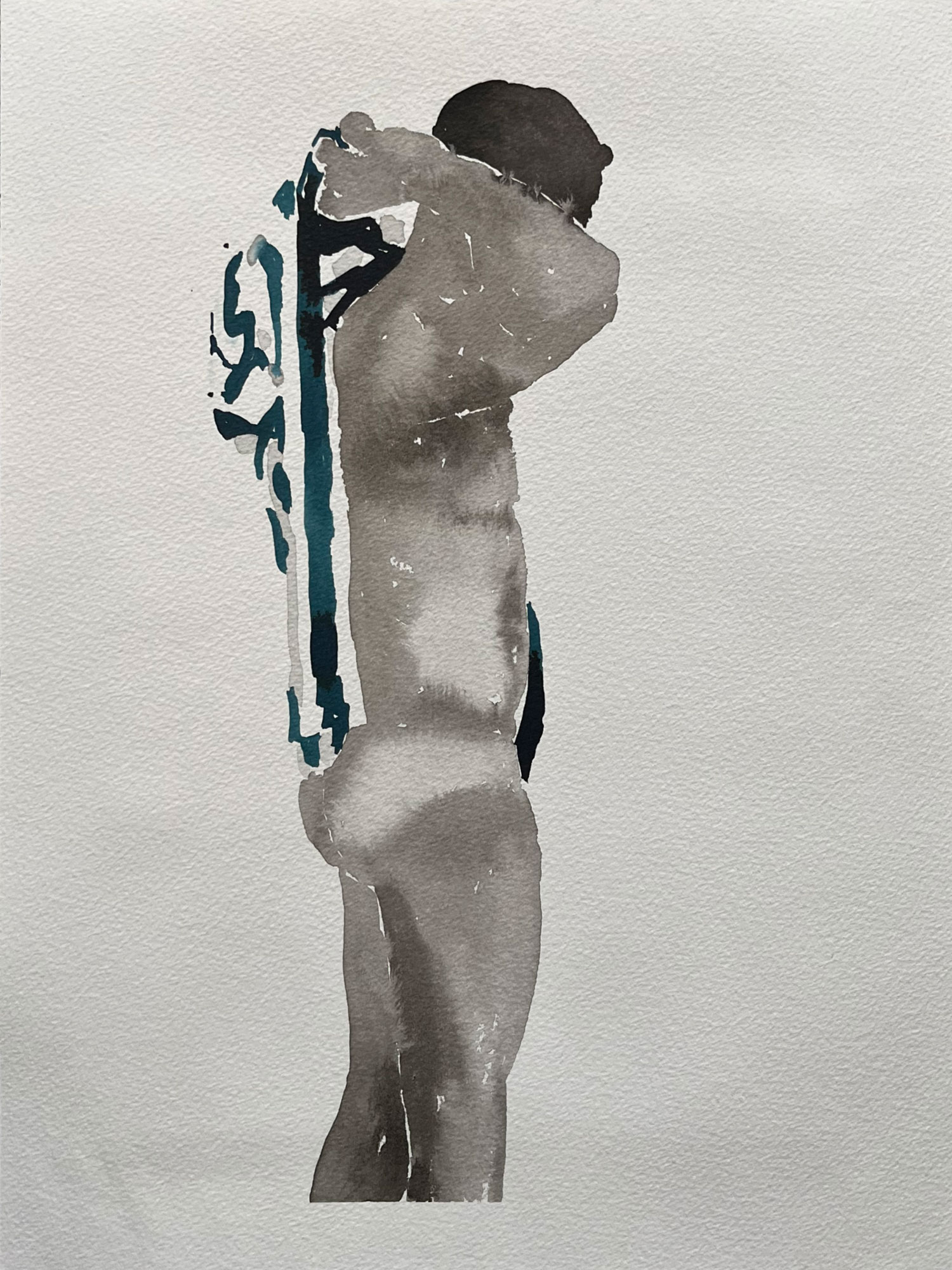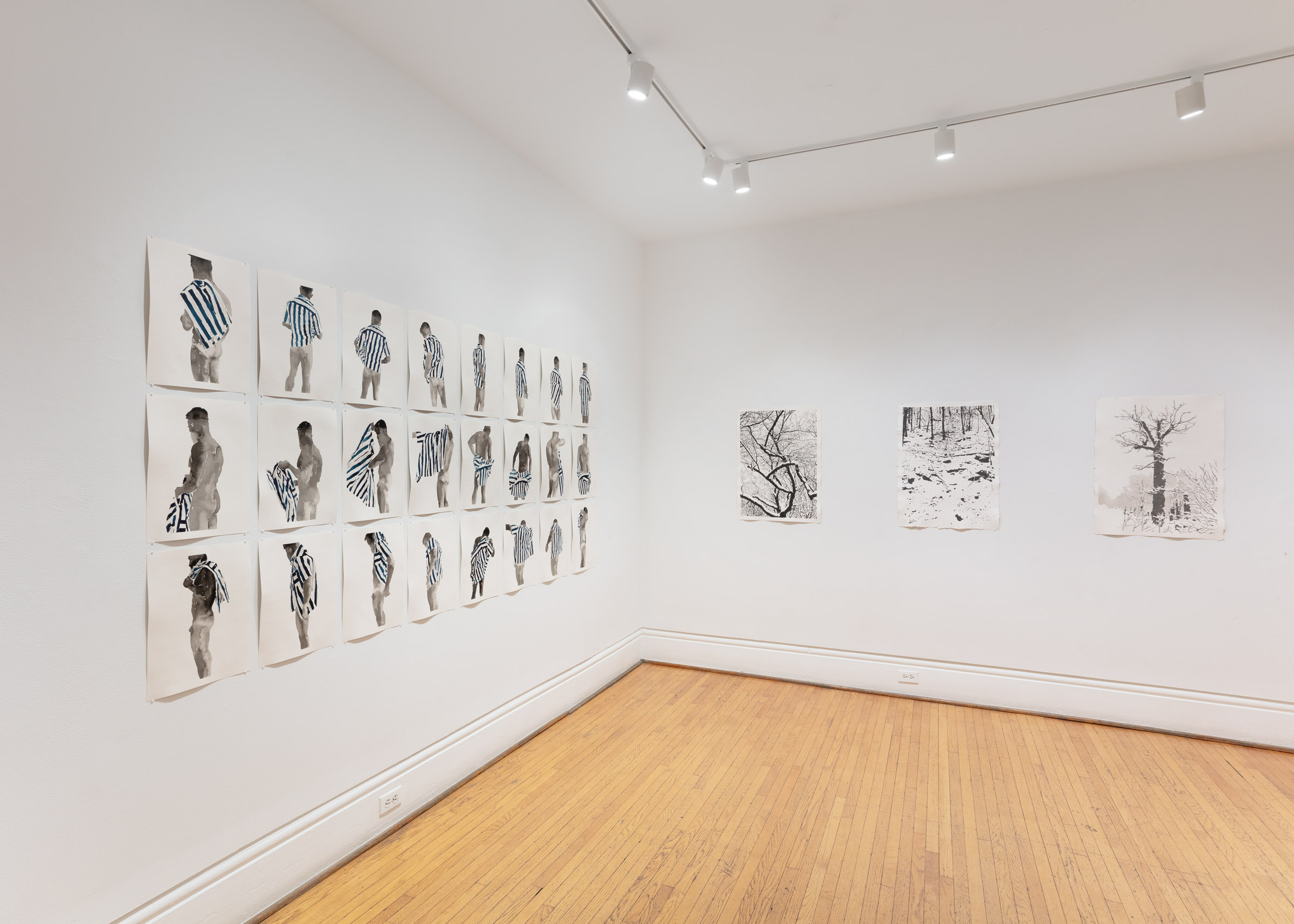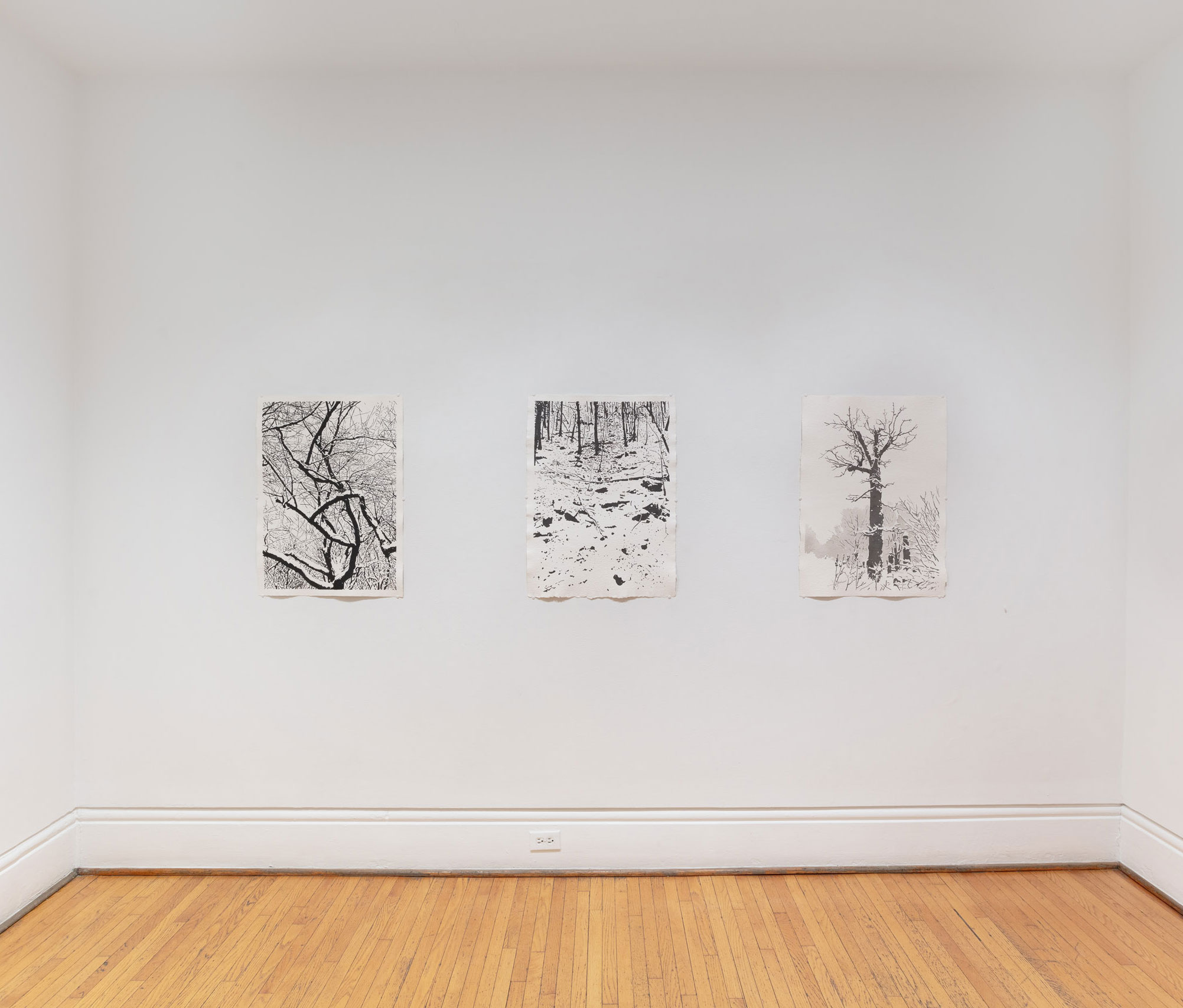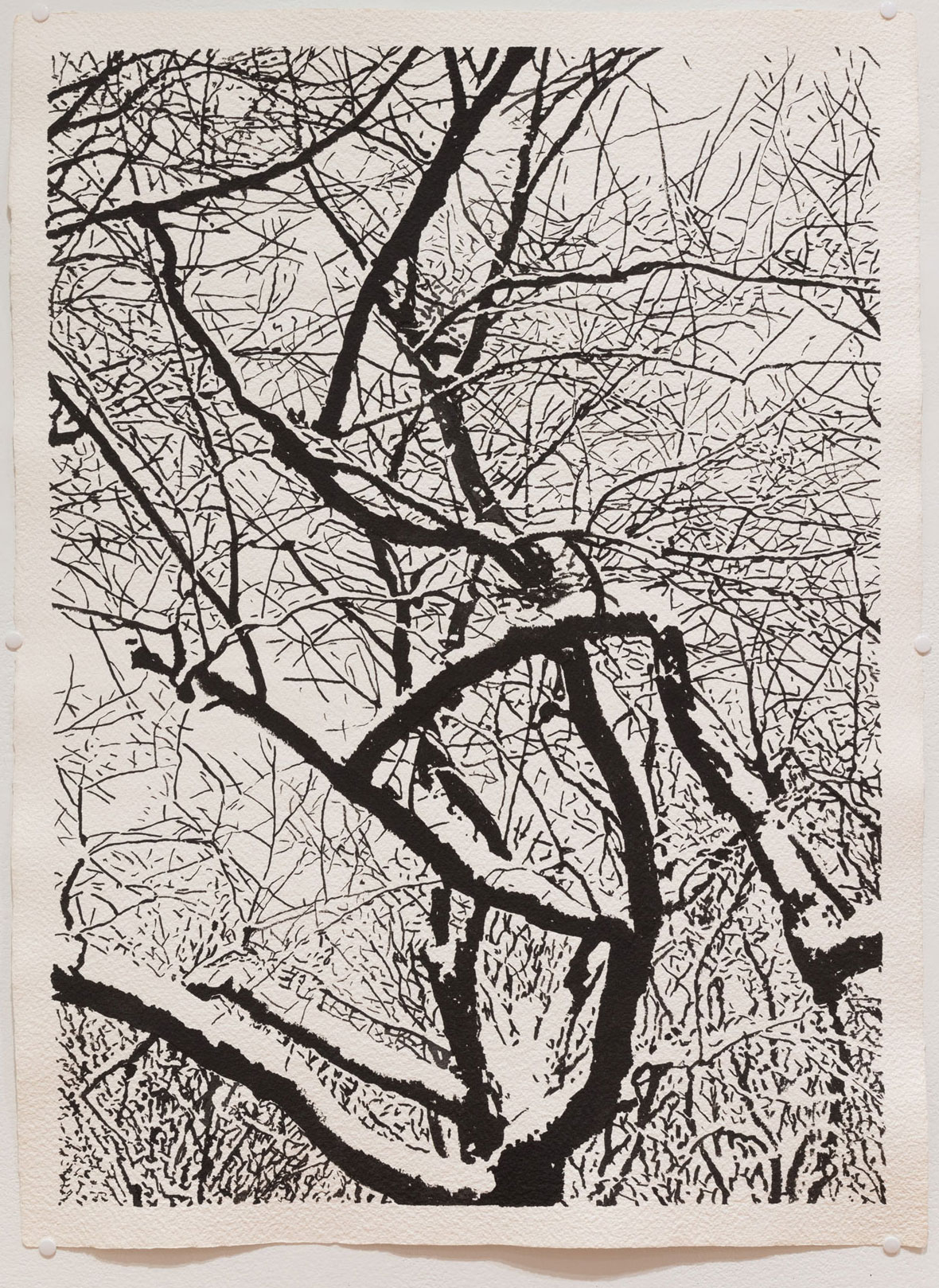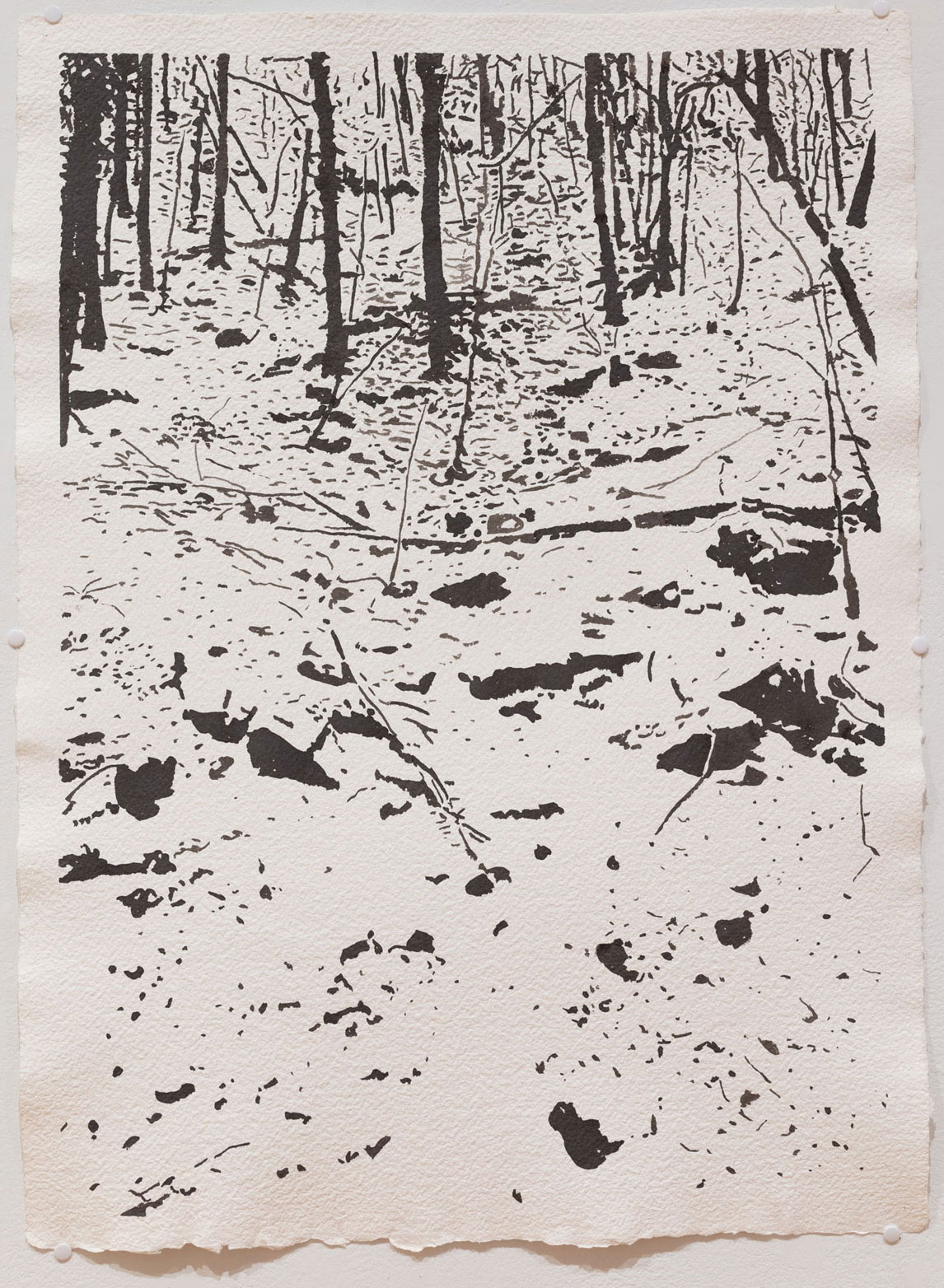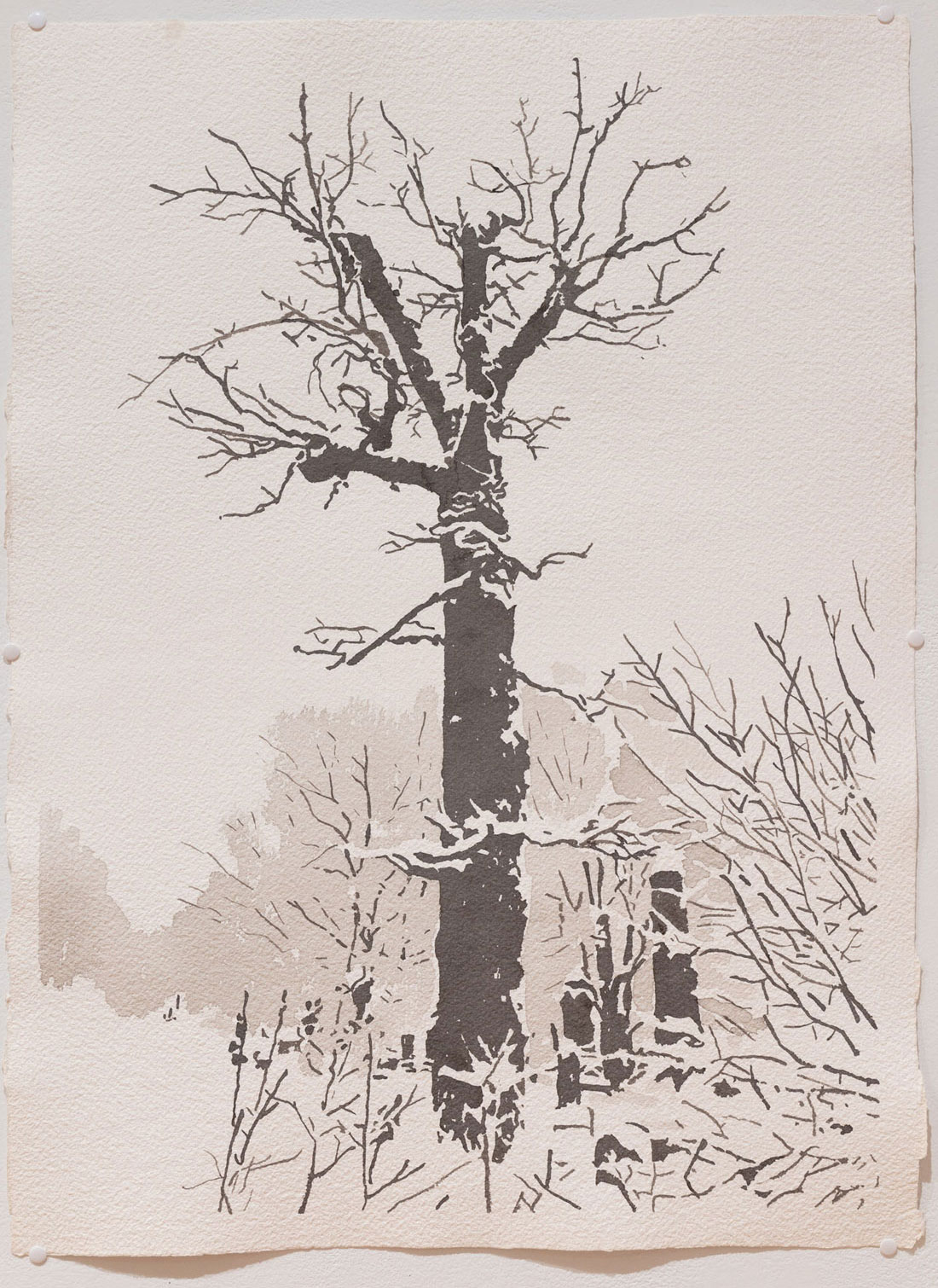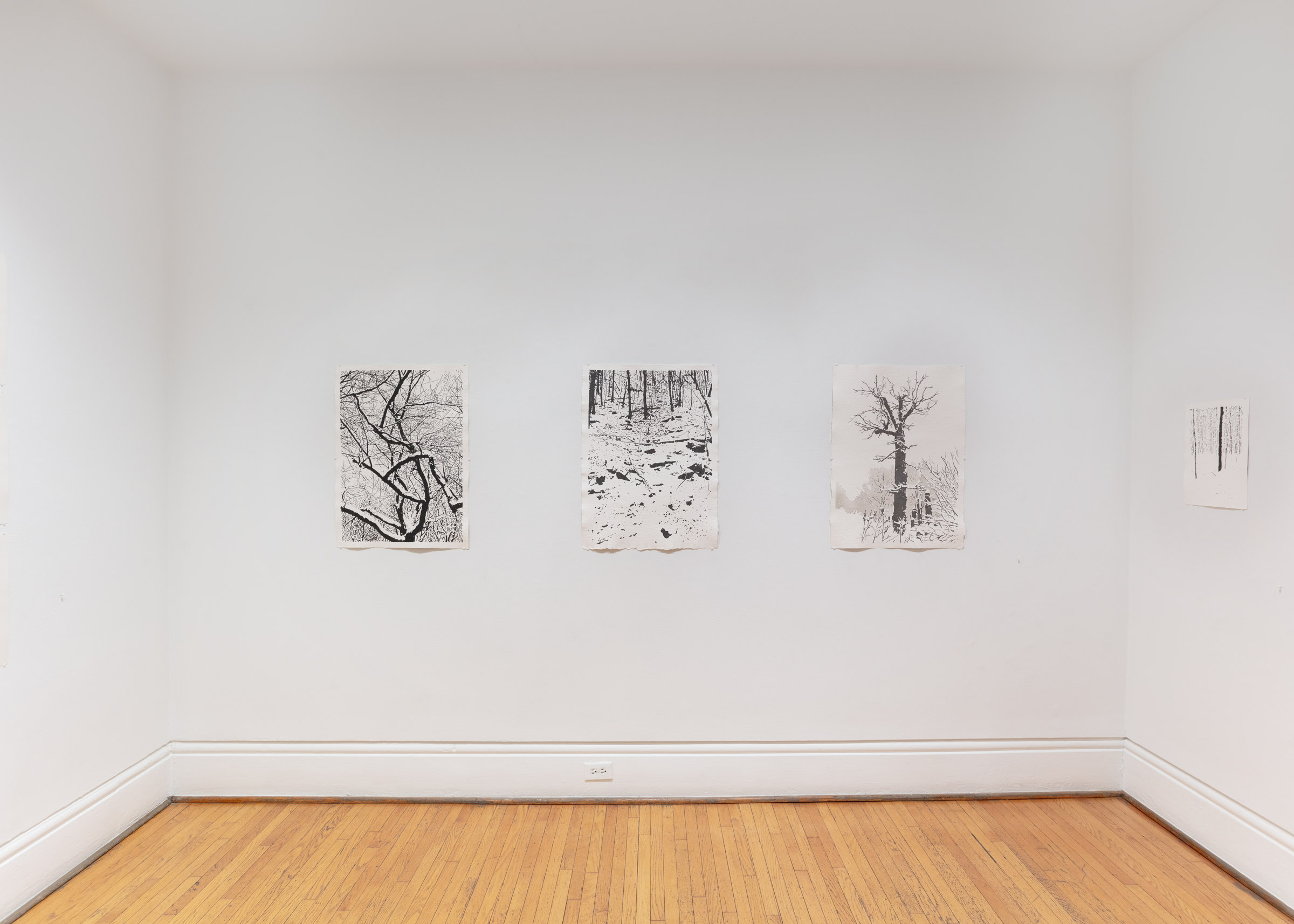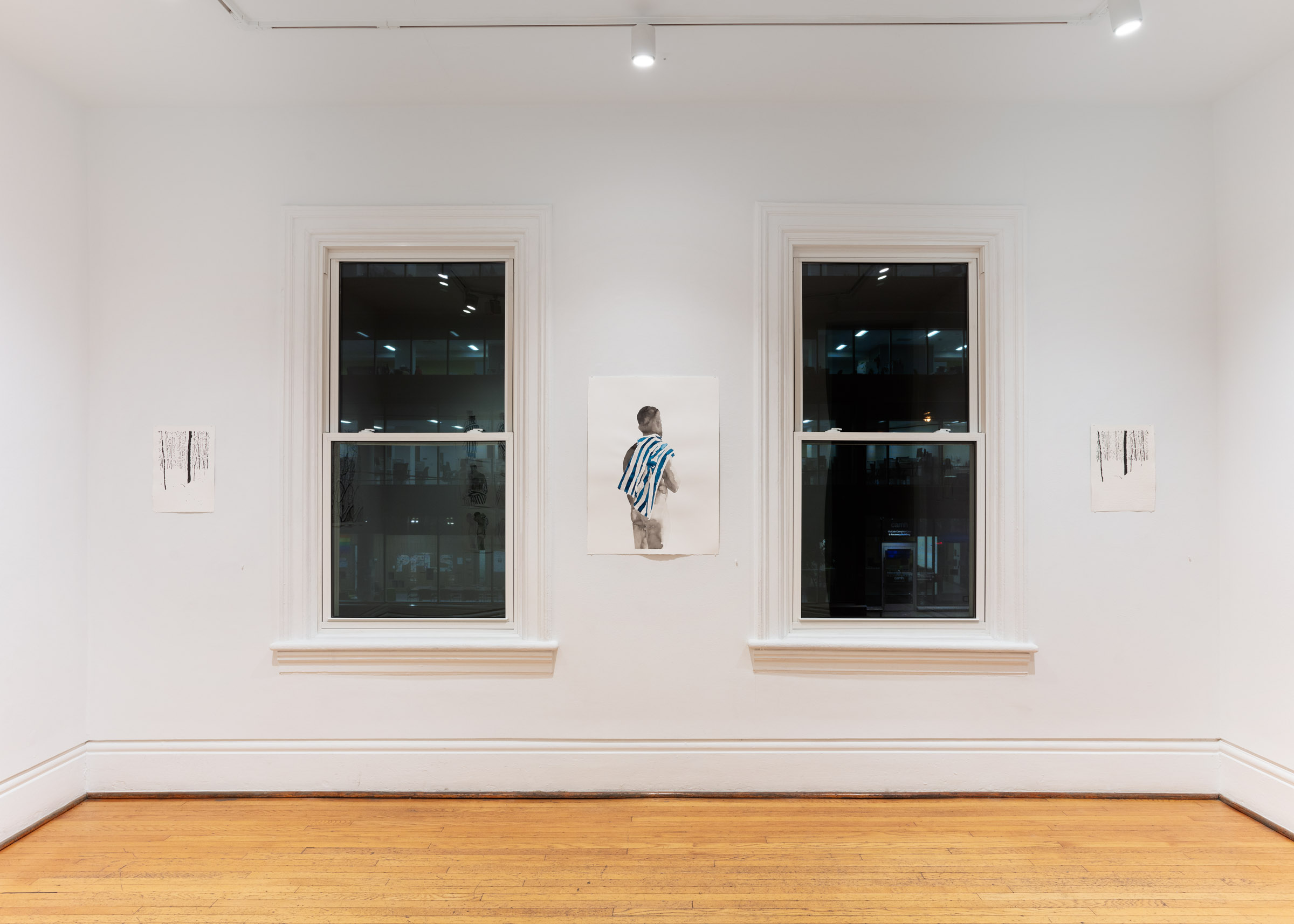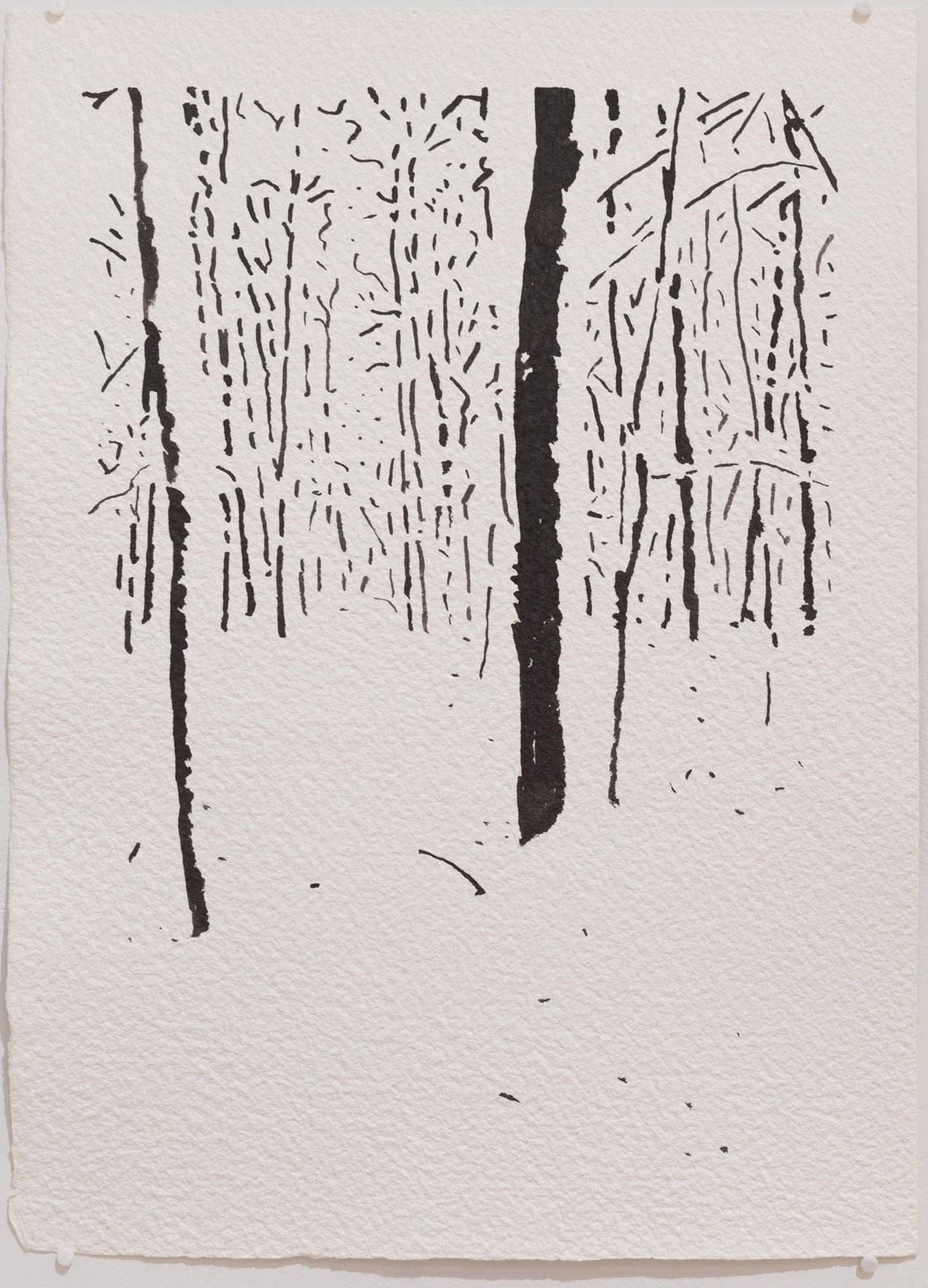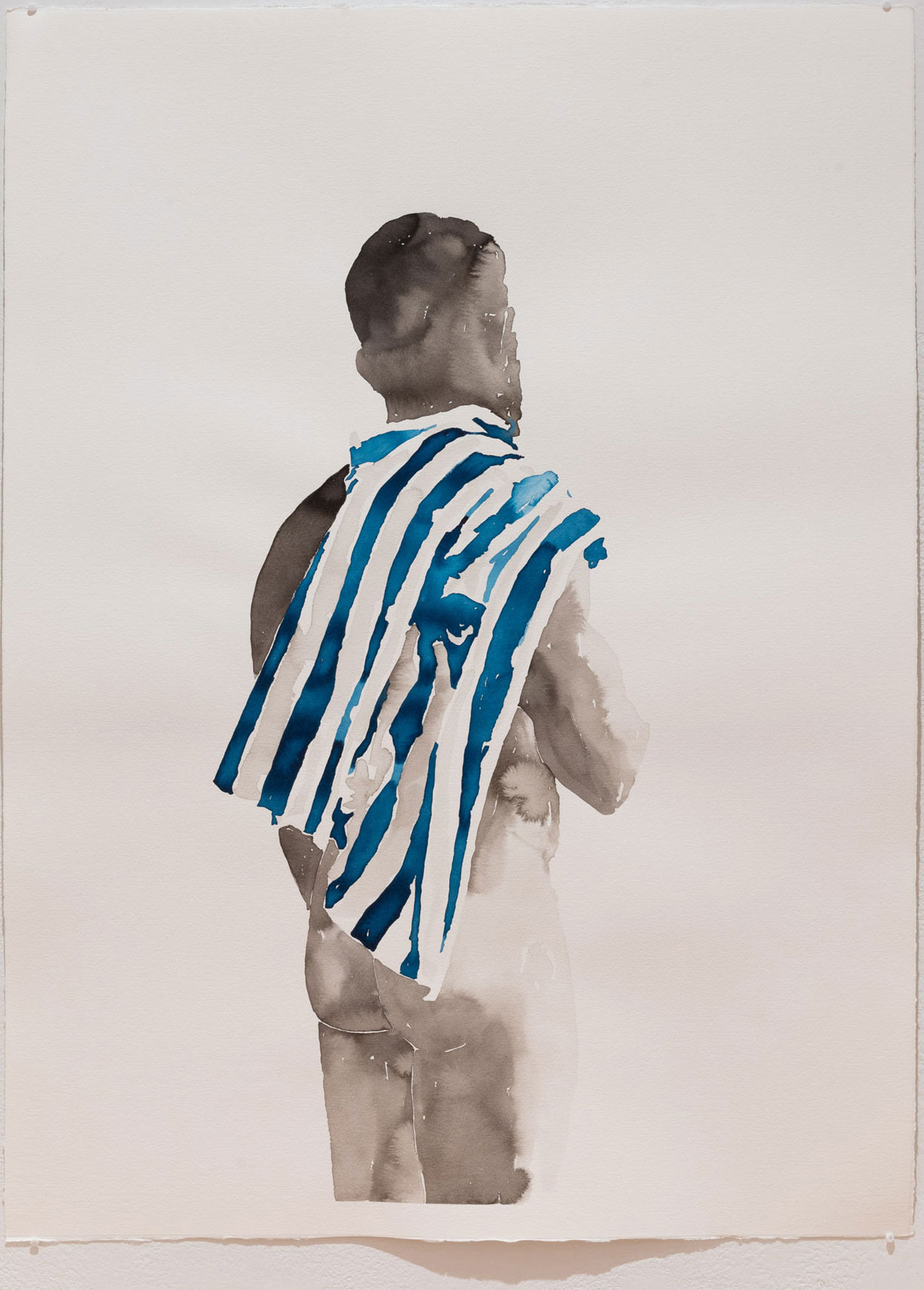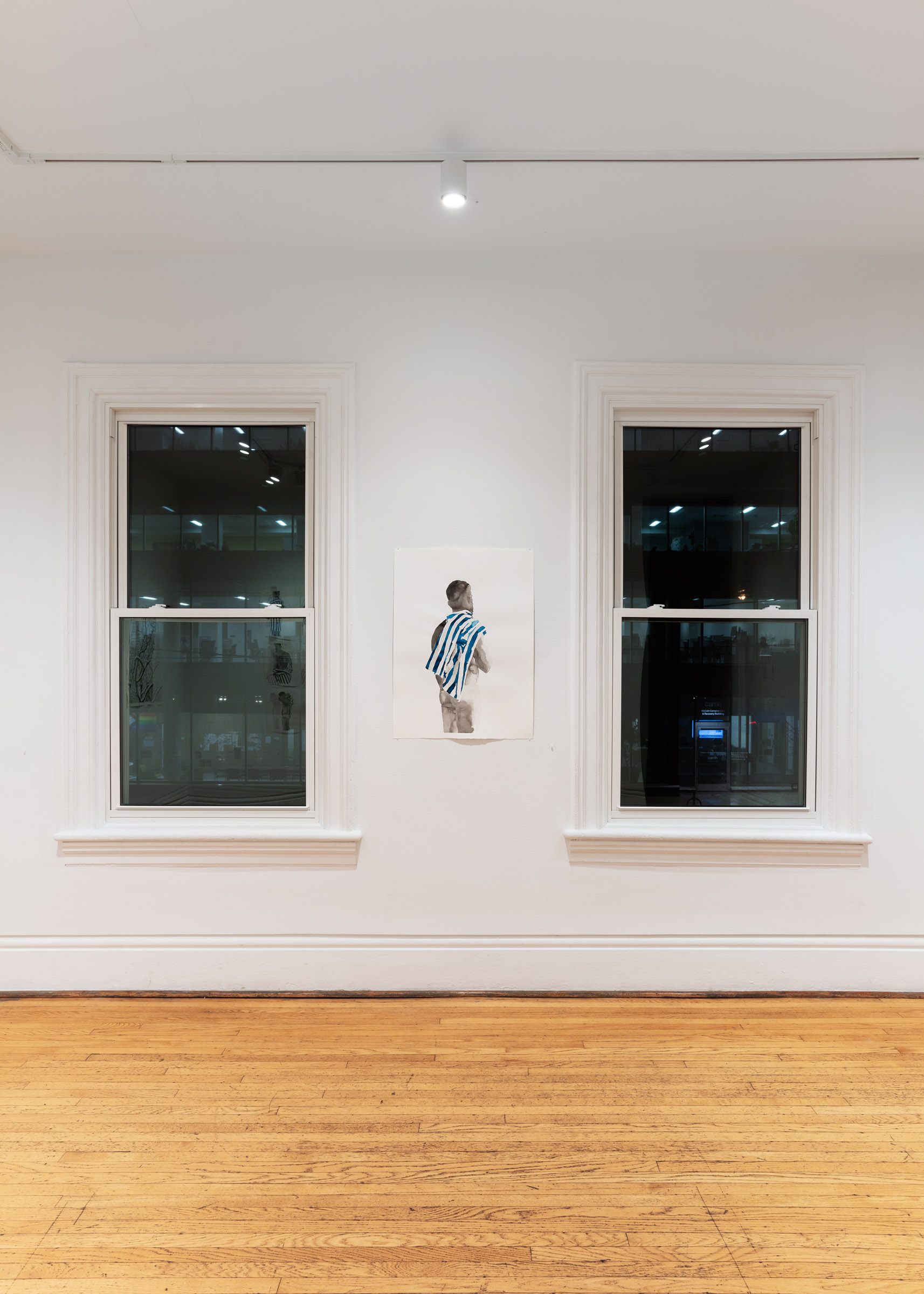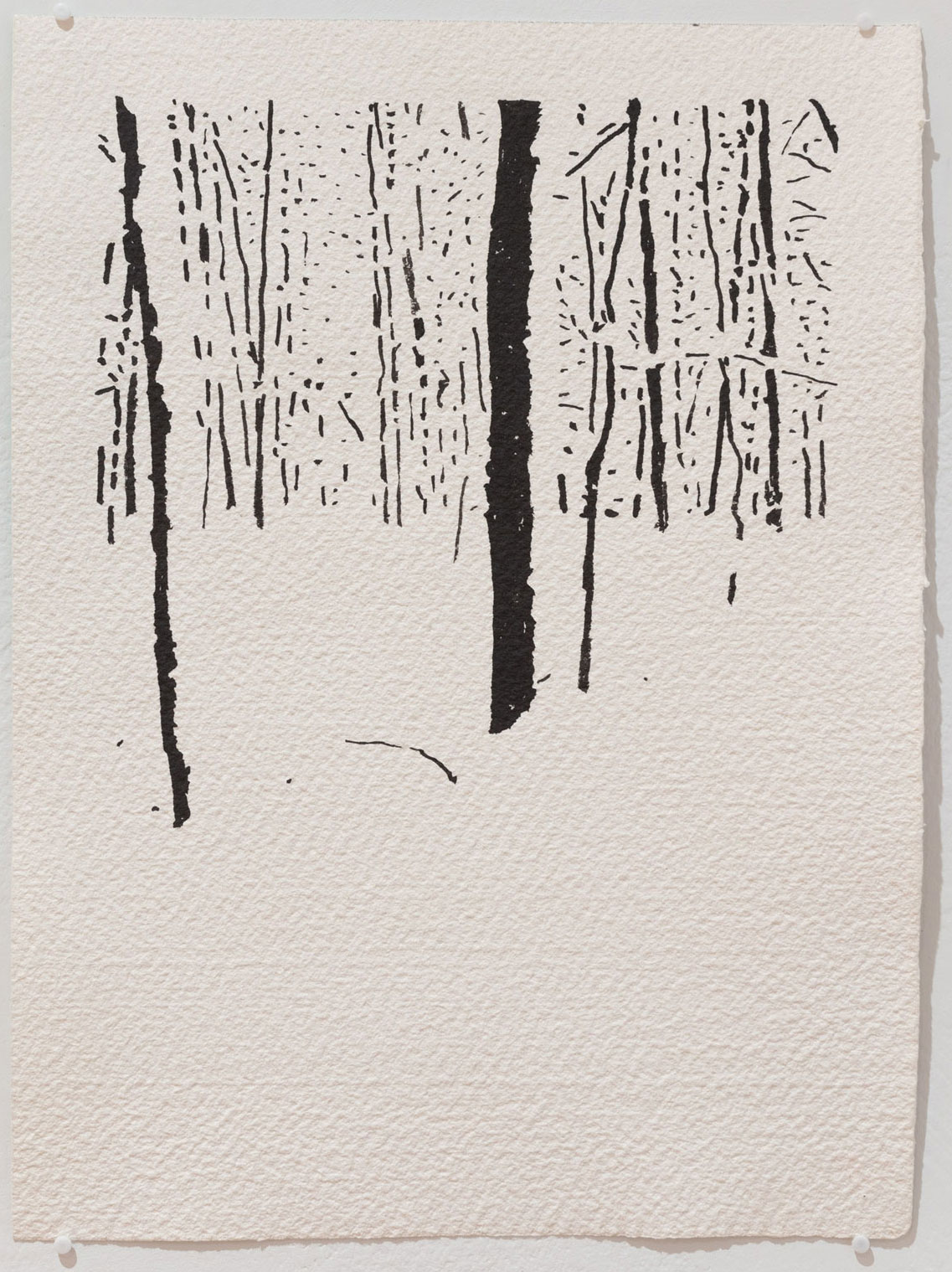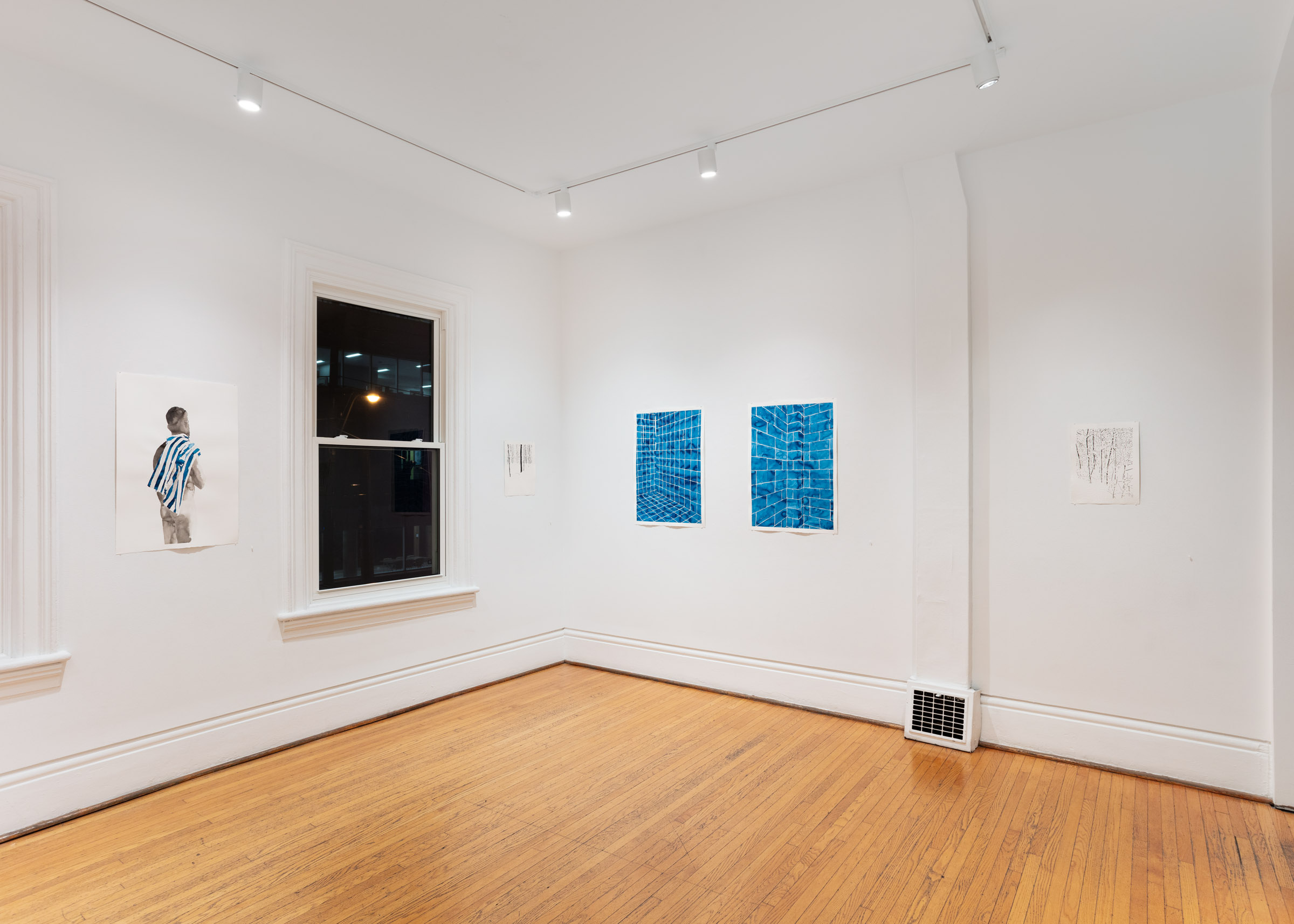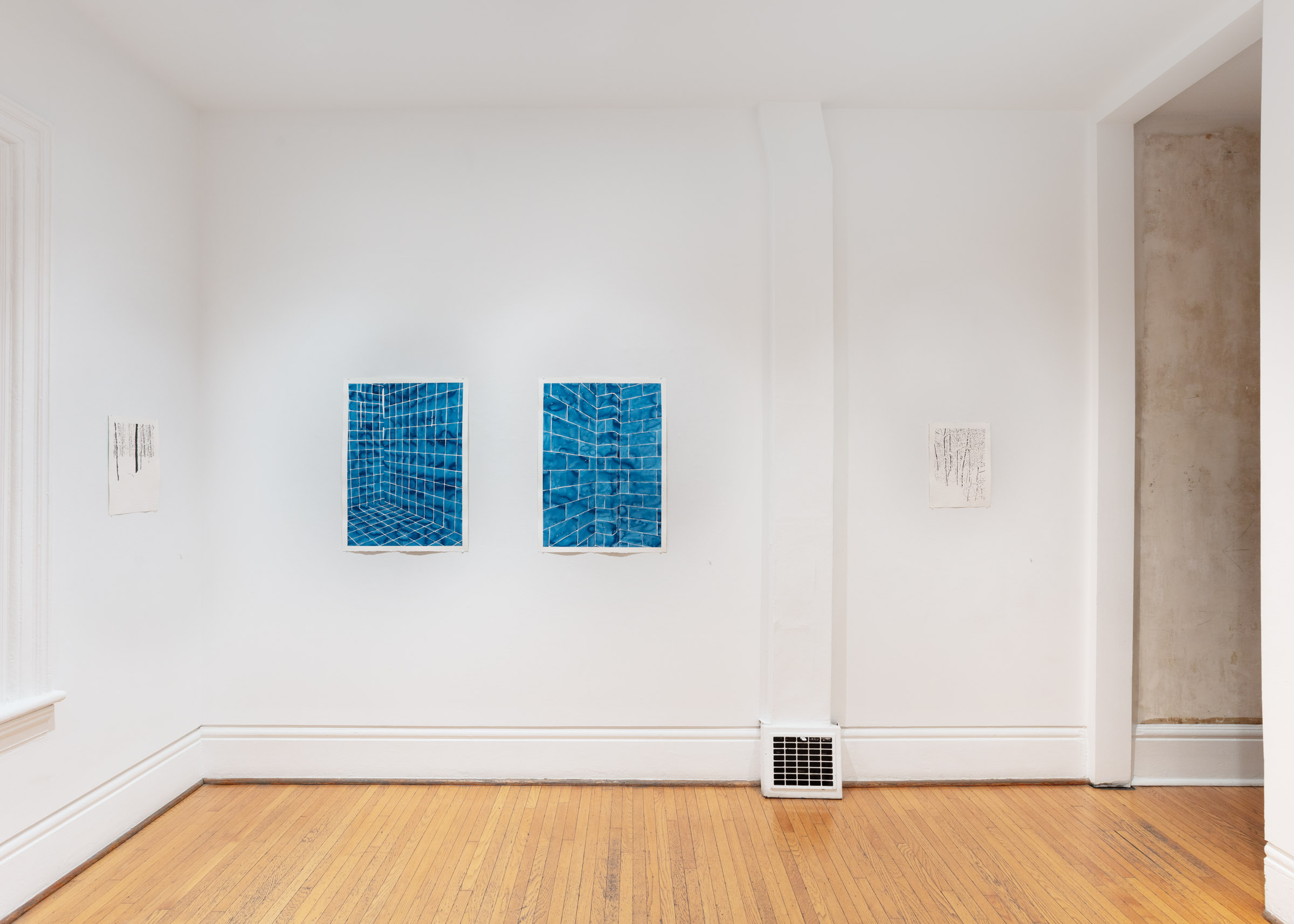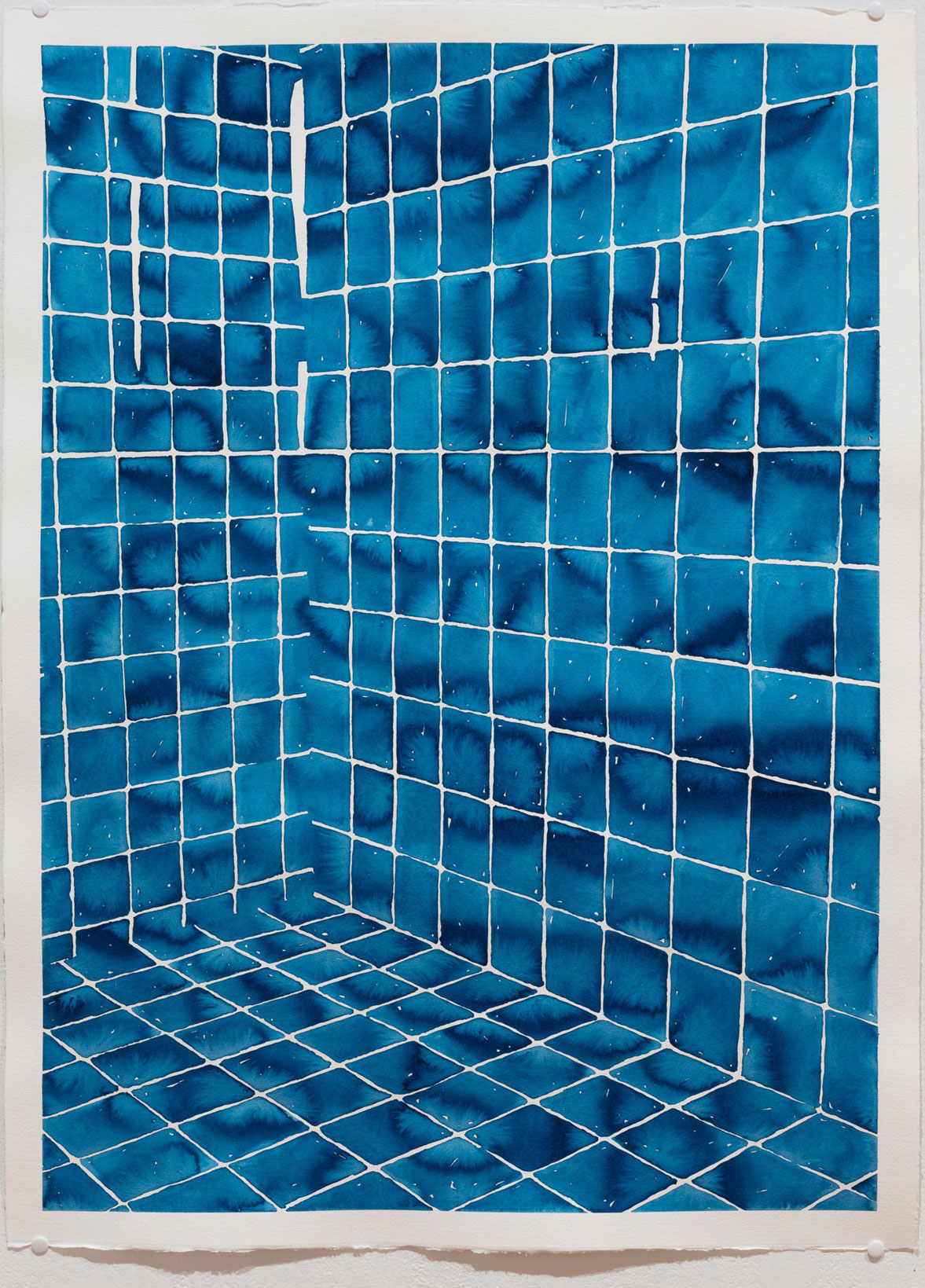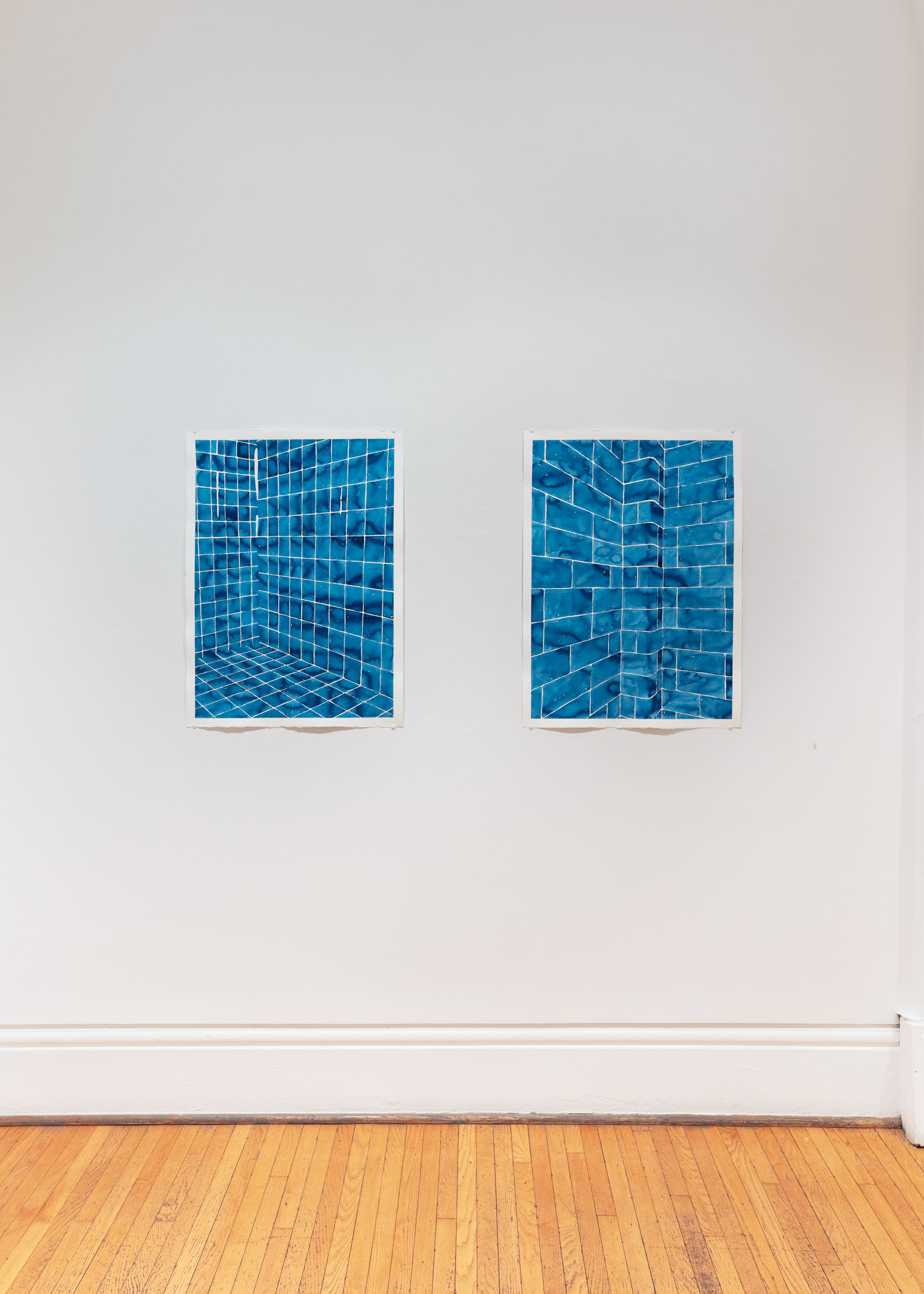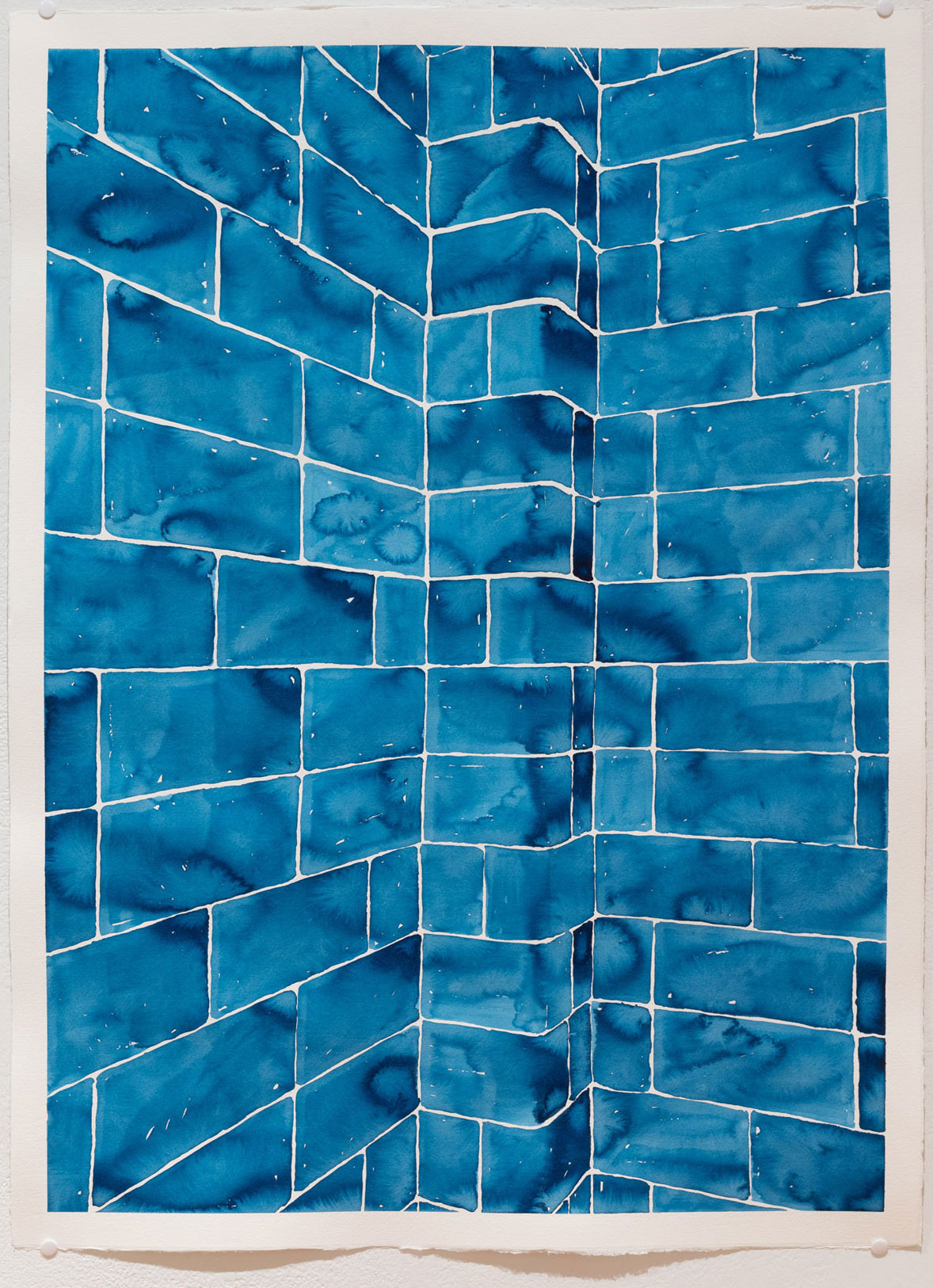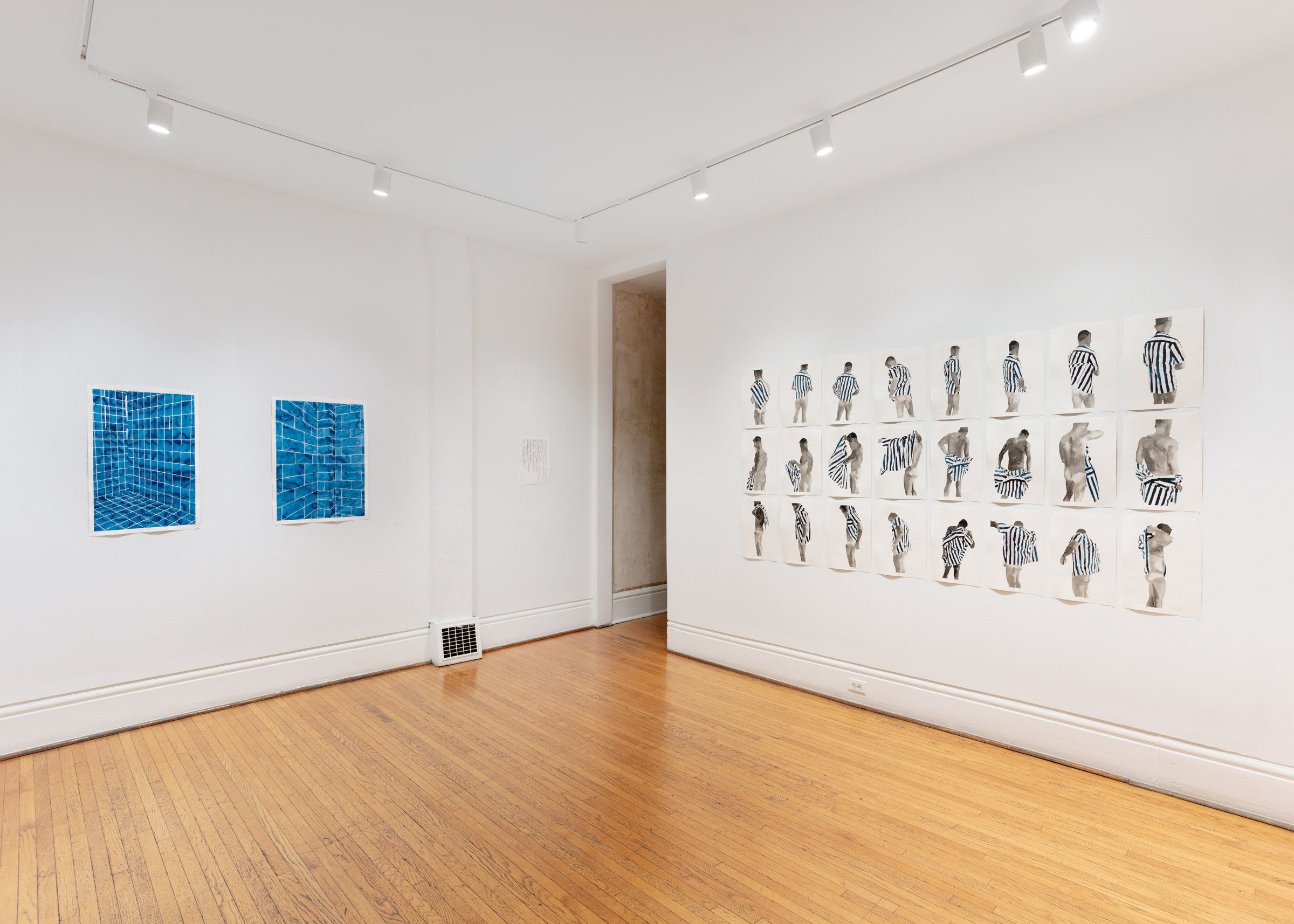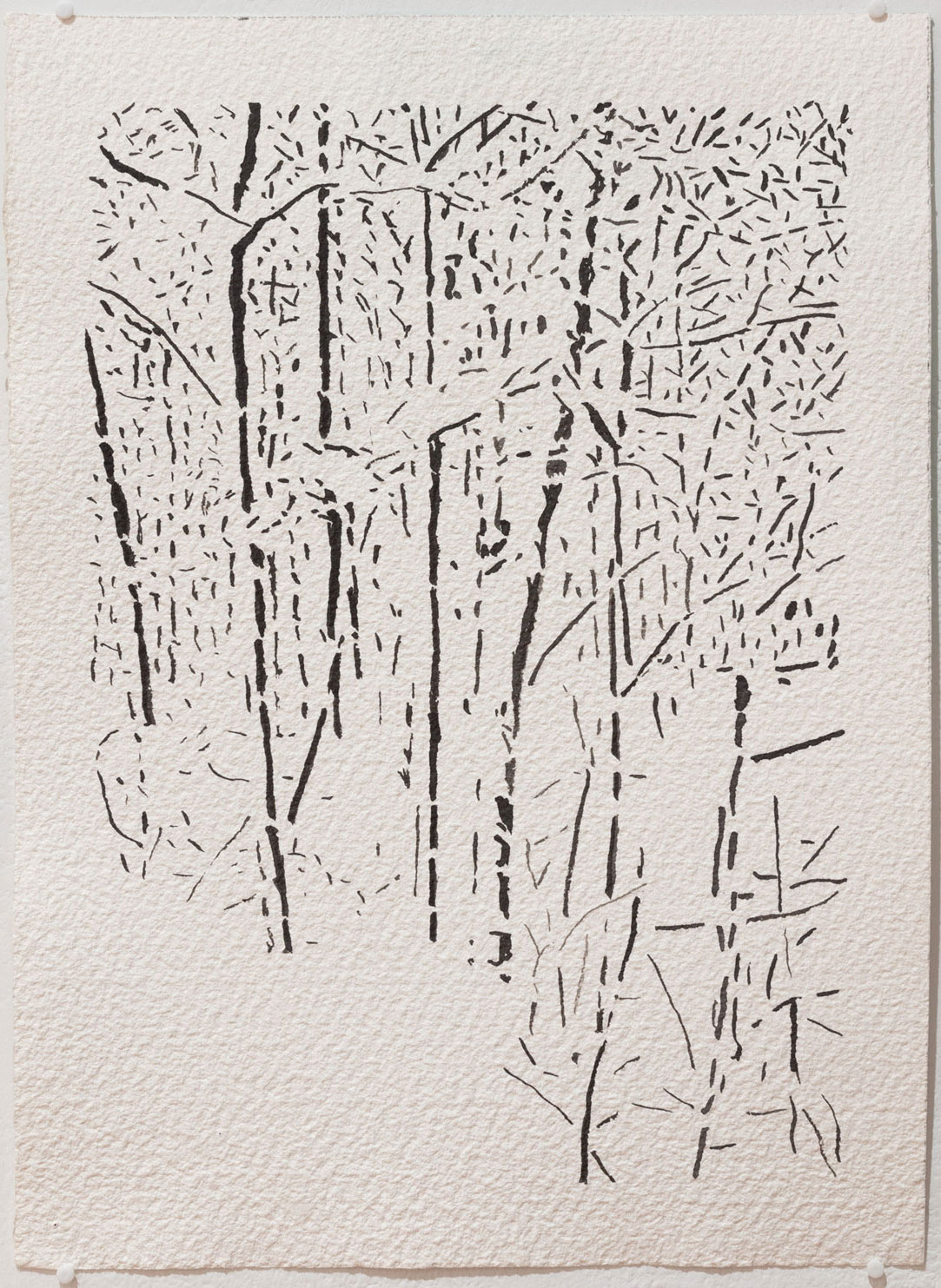Afuera y Adentro
Francisco De la Barra
works on paper
January 12 - February 17, 2024
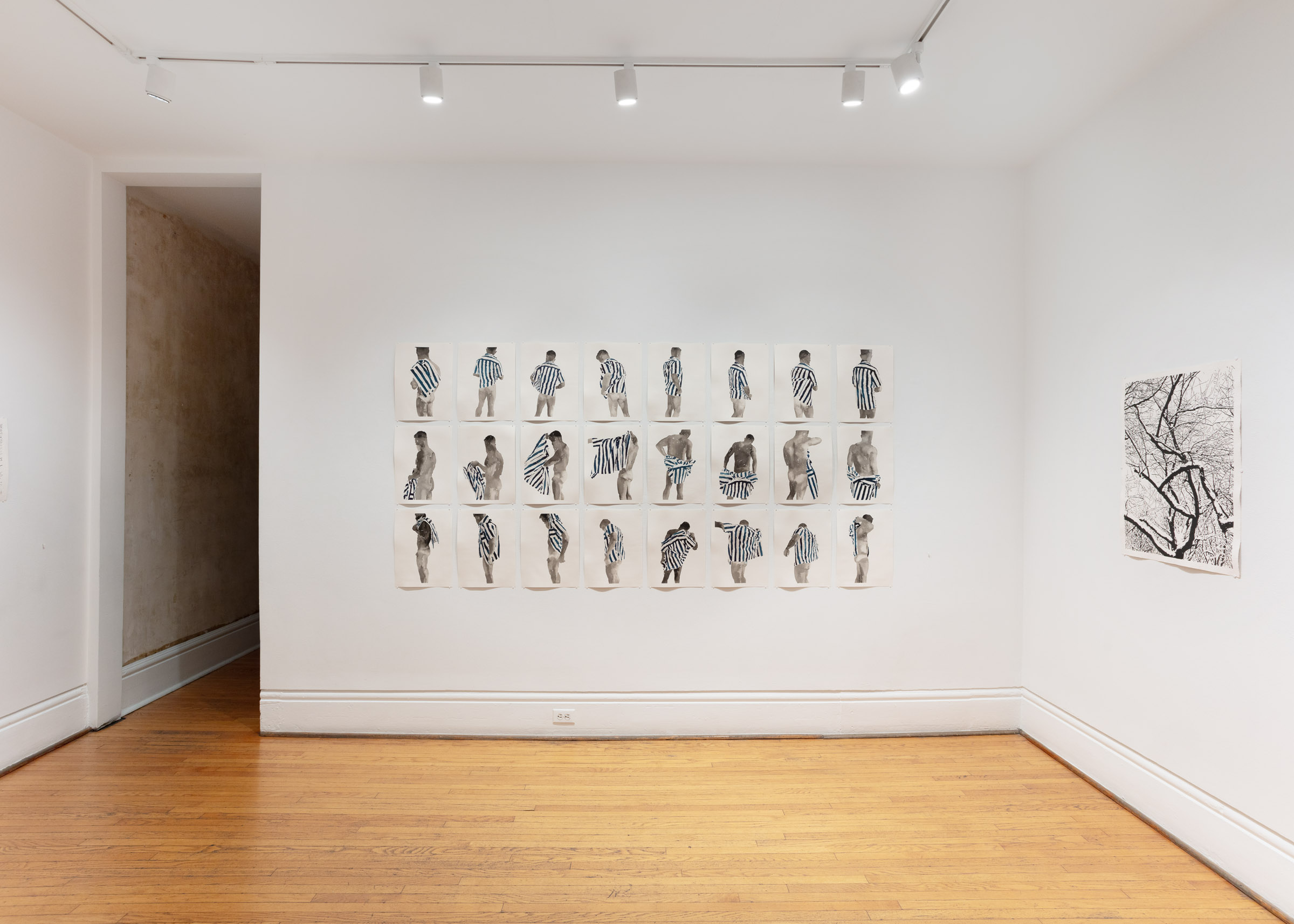
Paul Petro Contemporary Art is pleased to introduce the work of Francesco De la Barra to our audience with his first solo exhibition at the gallery.
De la Barra's work focuses on drawing and painting, most recently with the production of ink washes on paper. His interests lay in the exploration of the role of memory in the construction of images through the depiction of the male body and of architectural and natural spaces. With Francisco's first solo exhibition at our gallery we look at the intersections of these three aspects to his work.
Here are some words from the artist:
"In this exhibition, I present pieces from my most recent series of ink washes on paper. The subjects explored are the male body, the architectural space and the organic form, the latter obtained from the observation of landscapes. My source of inspiration comes from my daily life, captured with my cell phone. The landscapes originate from (family) excursions made during the winter months, and the shower images come from my swimming routine in the public pools of Montreal. The male body images, however, result from planned studio sessions with models.
"My treatment of these images privileges the silhouette and a synthesis of forms which gives them an almost abstract character. It also allows me to explore my technique of ink washes and to render with an economy of means the volumes and the shapes represented. This work of interpretation, reduction and synthesis activates the white surface of the paper inhabited by these sensual forms. The interplay between positive and negative space thus creates a dynamic conversation between presence and absence, where the viewer is sometimes invited to complete the image by imagining what is not shown.
"For example, in the series Chemise-B, I frame my source images in a way that it enlarges and shows the male body partially or completely undressed. Although my work is be partly inspired by academic poses or by homoerotic photography, I'm more interested in the movements generated by daily actions, precisely those of getting dressed, undressed, showering or drying. I see these actions as the eroticism of the everyday. The idea for this came from previous series where I worked with images of myself undressing, like when I am in the locker room. Here, I asked the model to wear a striped shirt and to perform various movements of dressing/undressing. The results offer me a vast catalogue of images that have a great visual richness and mysterious narrative potential. Abstraction and figuration are simultaneously present, in a dialogue where the organic form of the body rubs with the abstract network of the stripes.
"In the series Interiors with tiles, I clandestinely photographed various locker rooms and showers in the gyms and swimming pools that I frequent in Montreal. I am fascinated by the grids that the tiles form in these spaces that host the naked body. They offer me images where the rigidity of the geometric structure is inhabited by the sensuality of the ink and its reaction to the paper when it dries. Equally, I privilege winter landscape because I can obtain images of high contrast that allows me to activate the white surface of the paper in interaction with my use of ink. These landscapes are a pretext to explore the organic form in other ways than with the body, which while absent from these two series is nonetheless recalled through its absence." -- Francisco De la Barra, January 2024
Francisco De la Barra (b. 1970, Santiago, Chile) lives and work in Montreal, Canada. He holds MFAs in architecture, landscape architecture and in visual arts, the latter obtained from Université du Québec à Montreal. He has shown his work in Canada, the United States, Chile and Argentina.














































